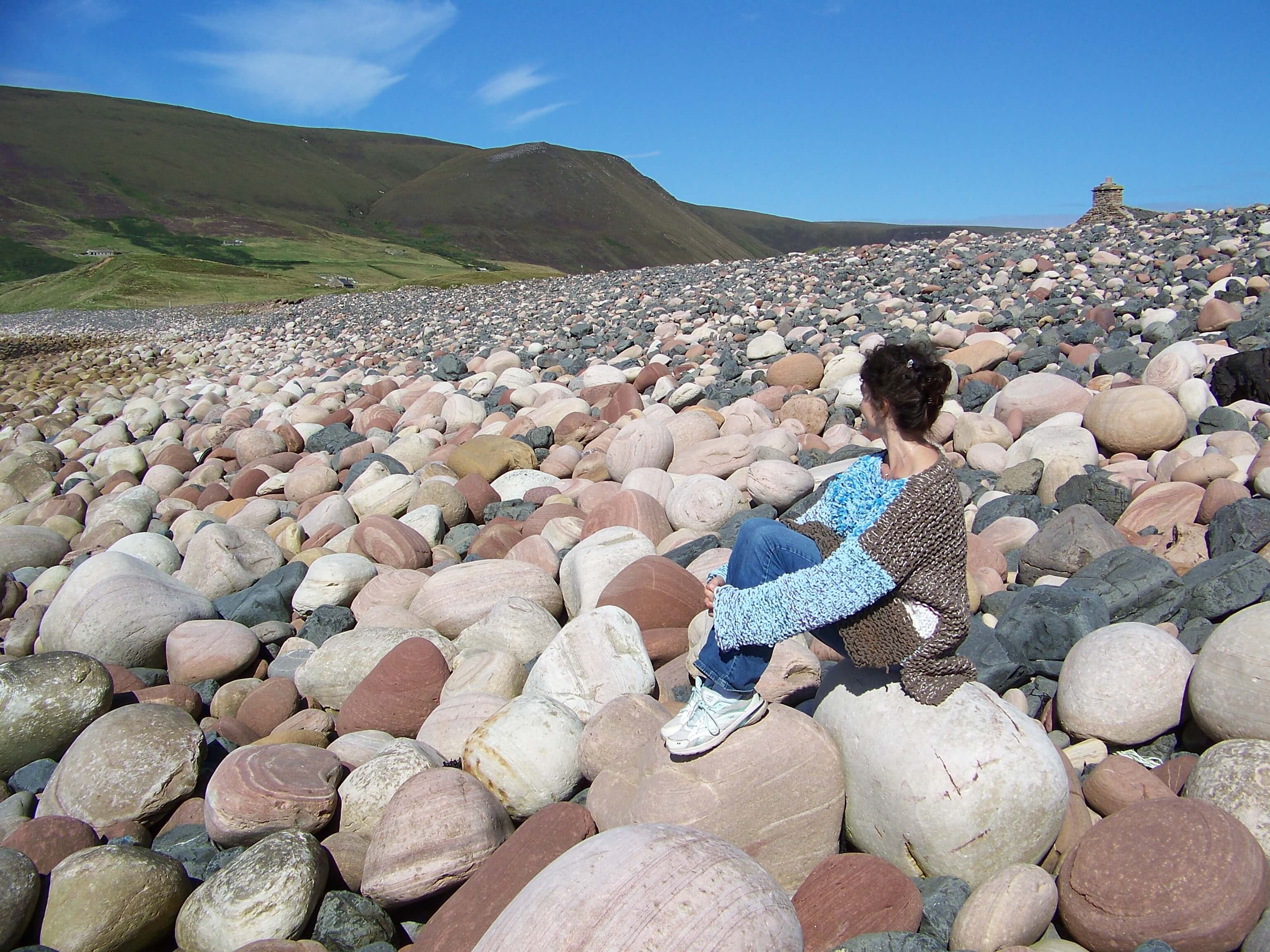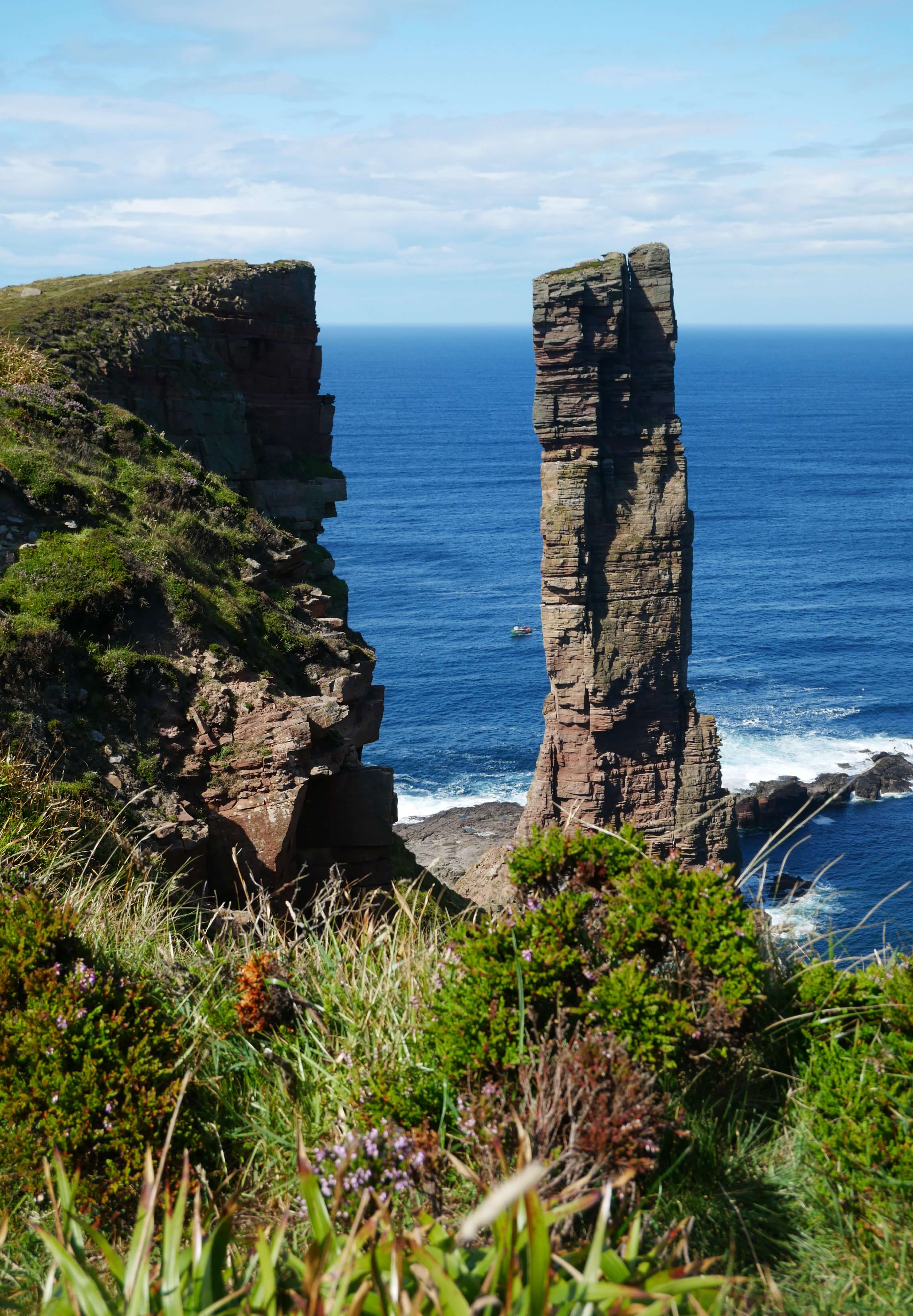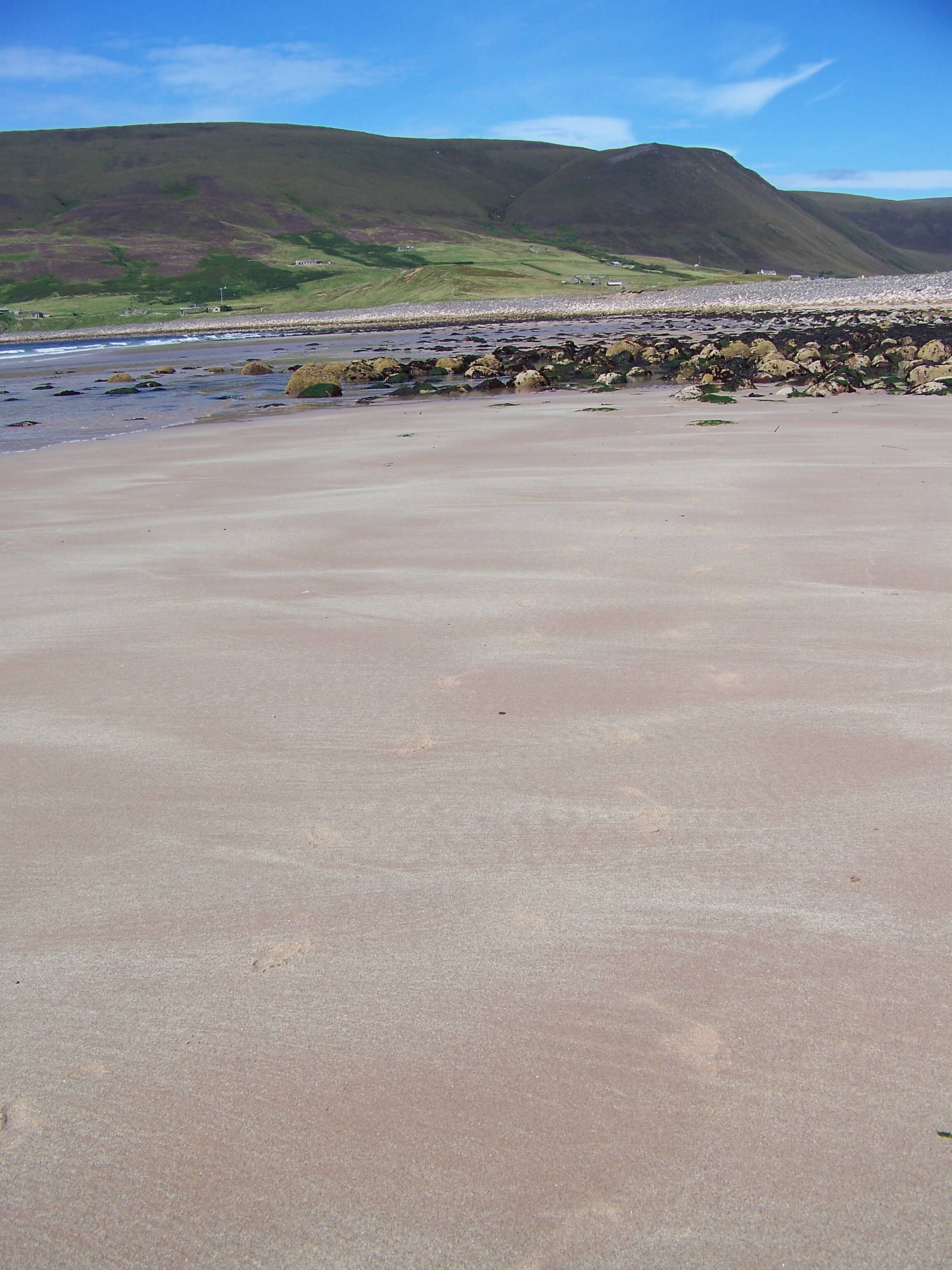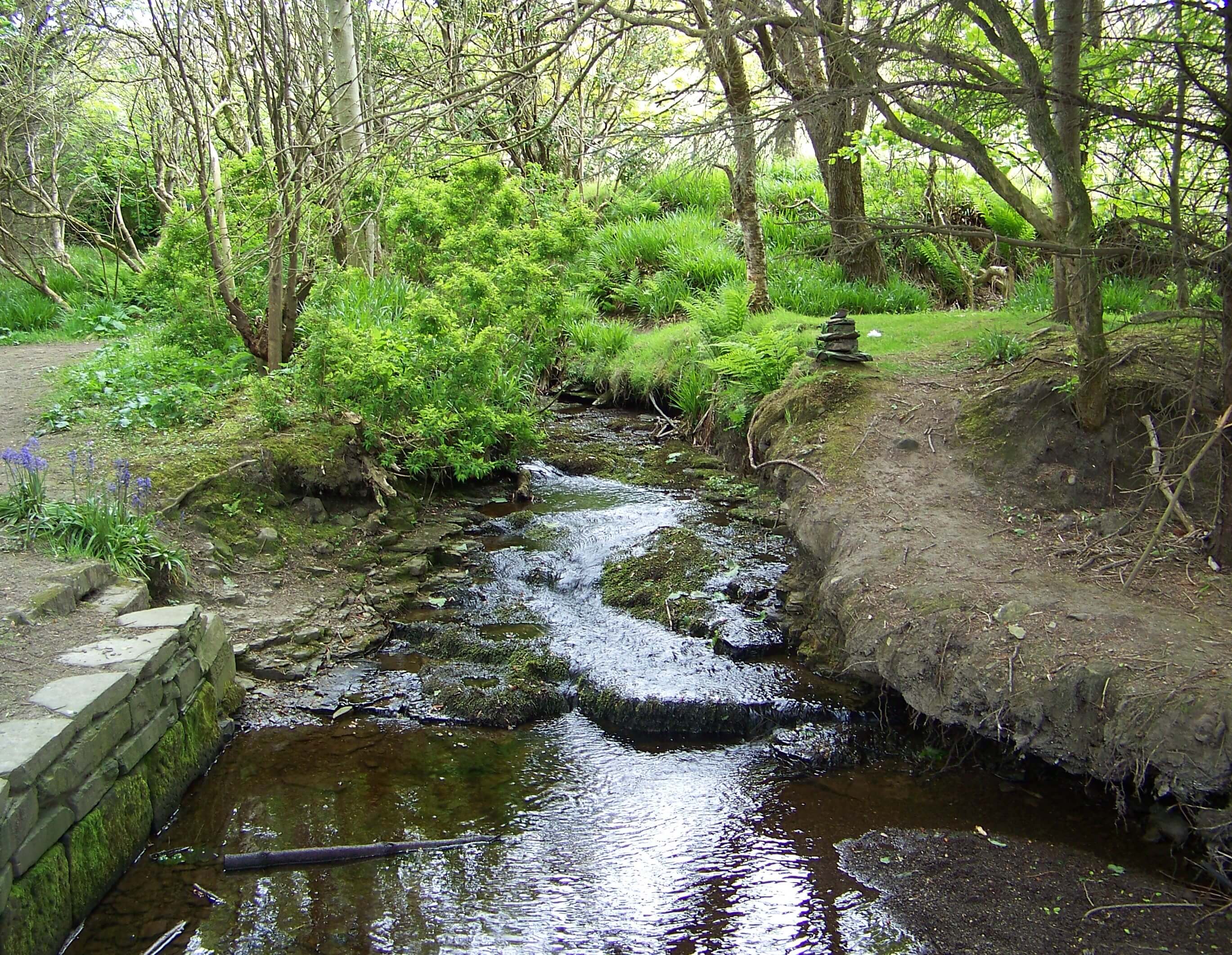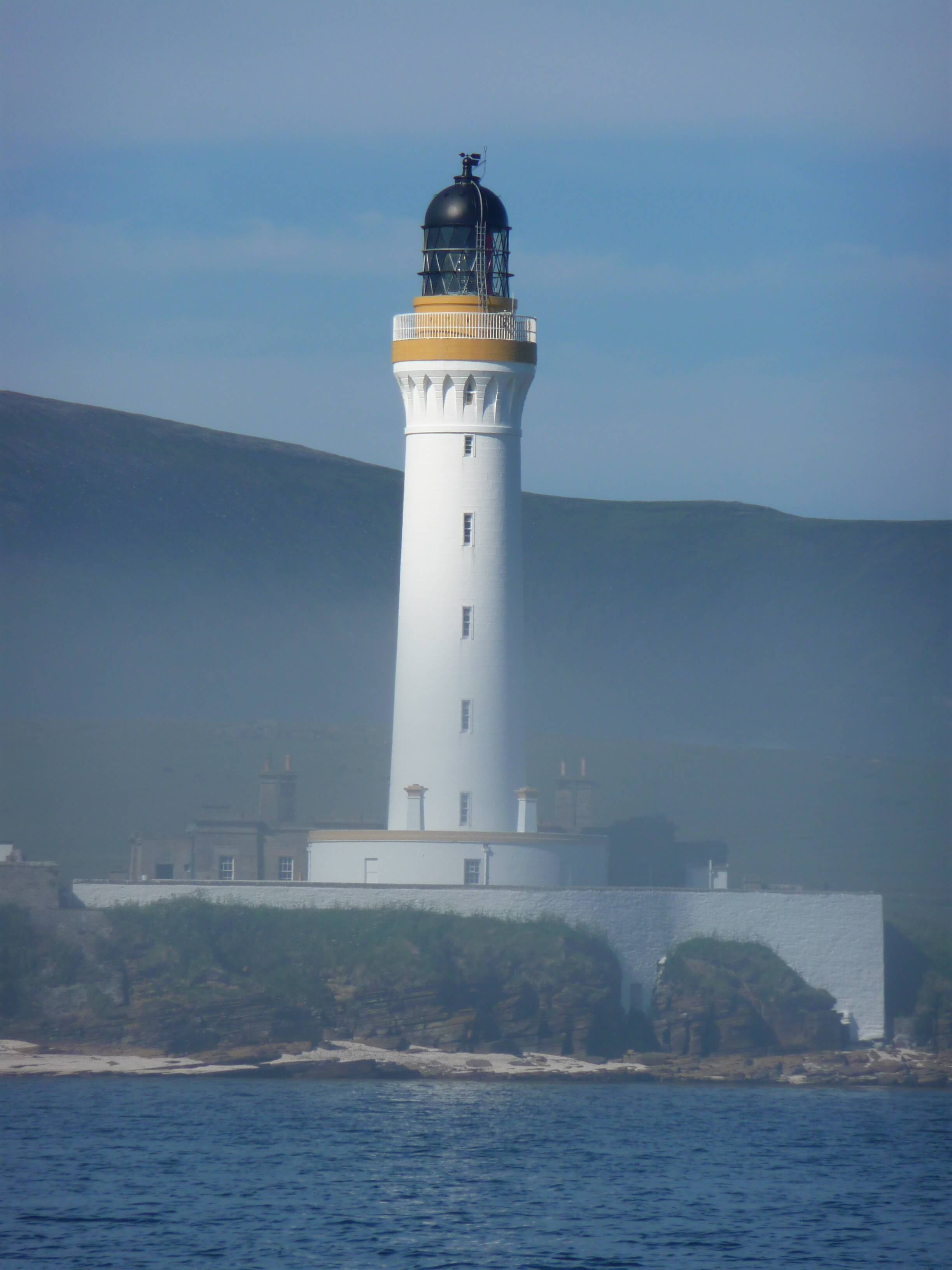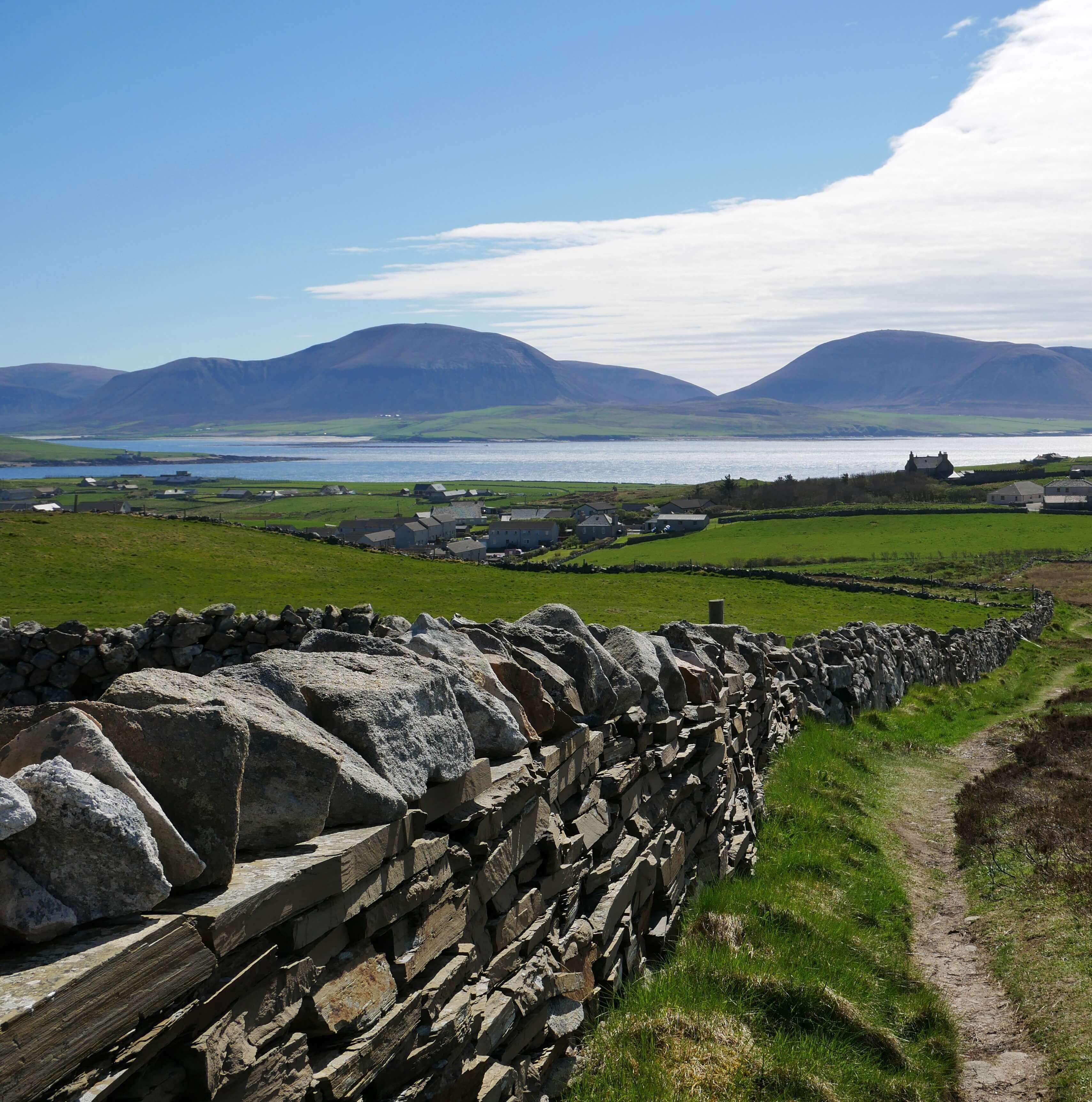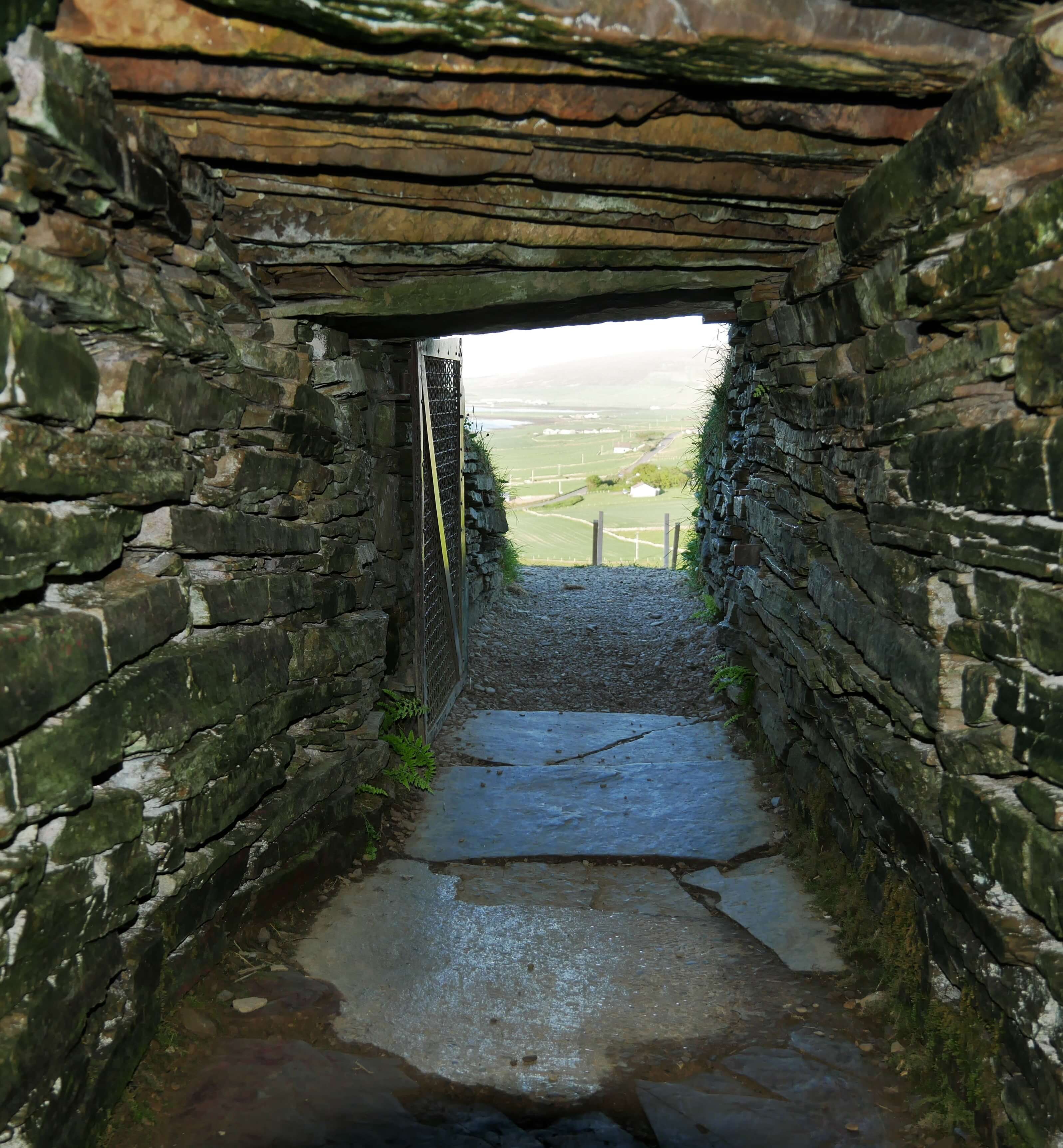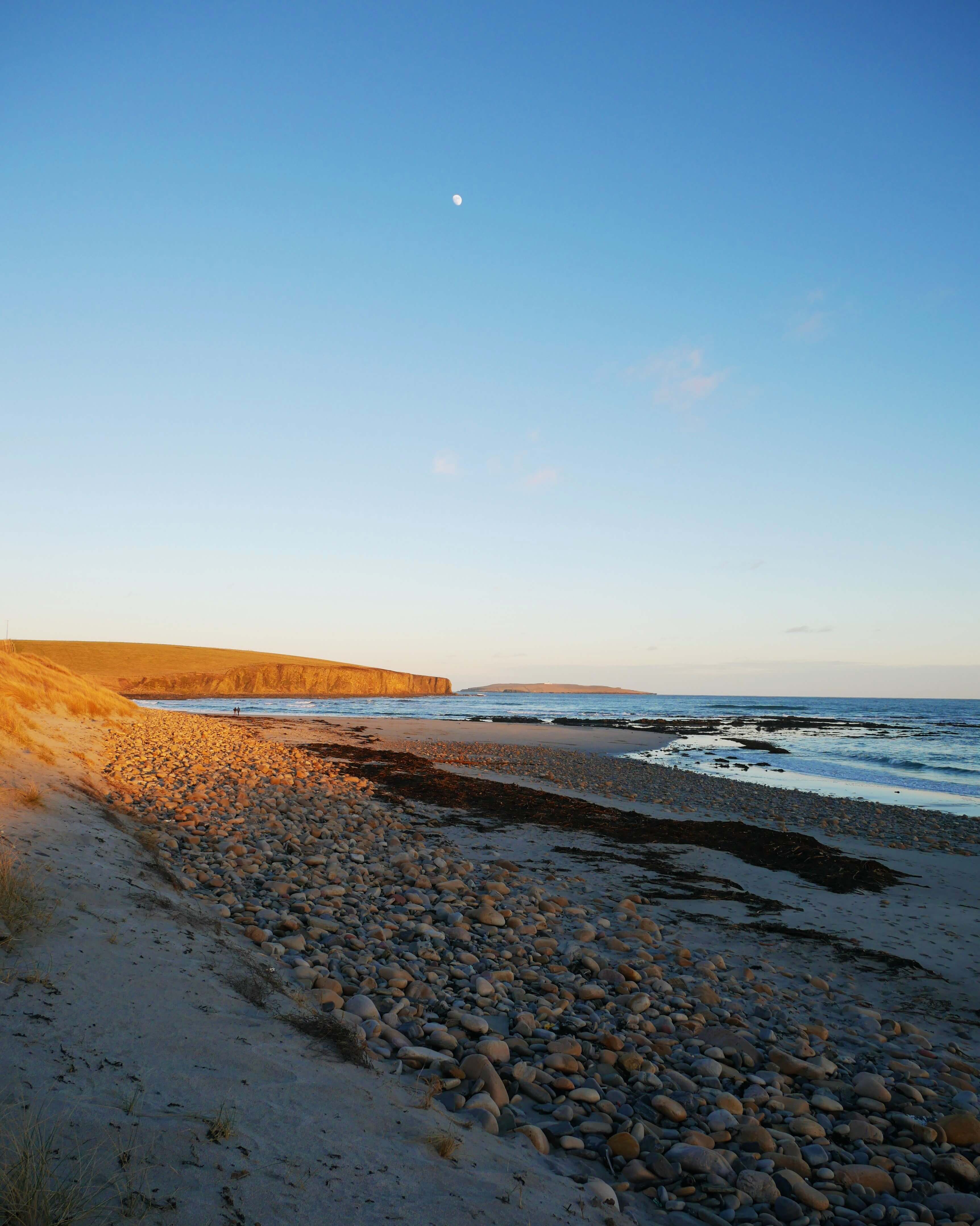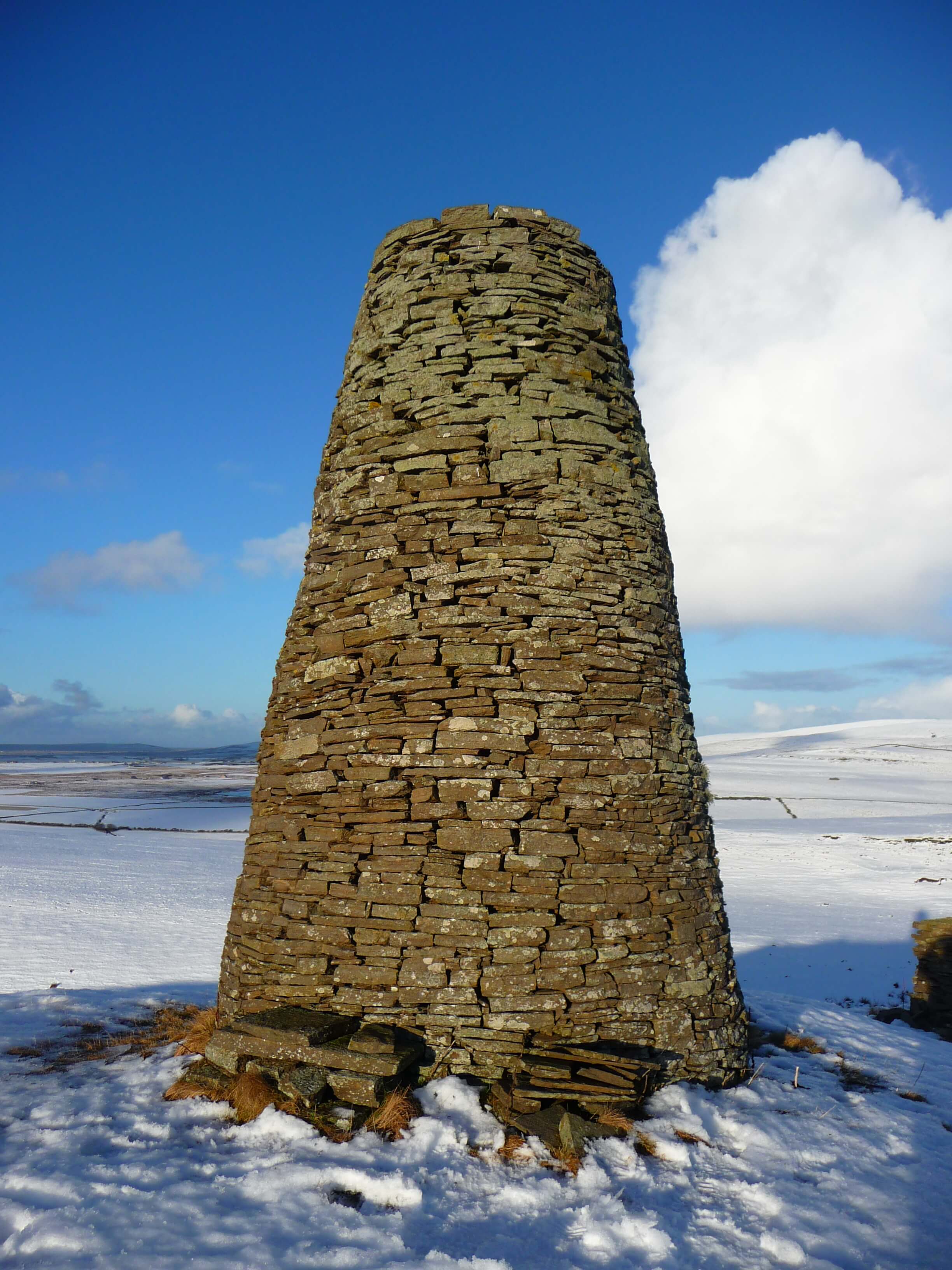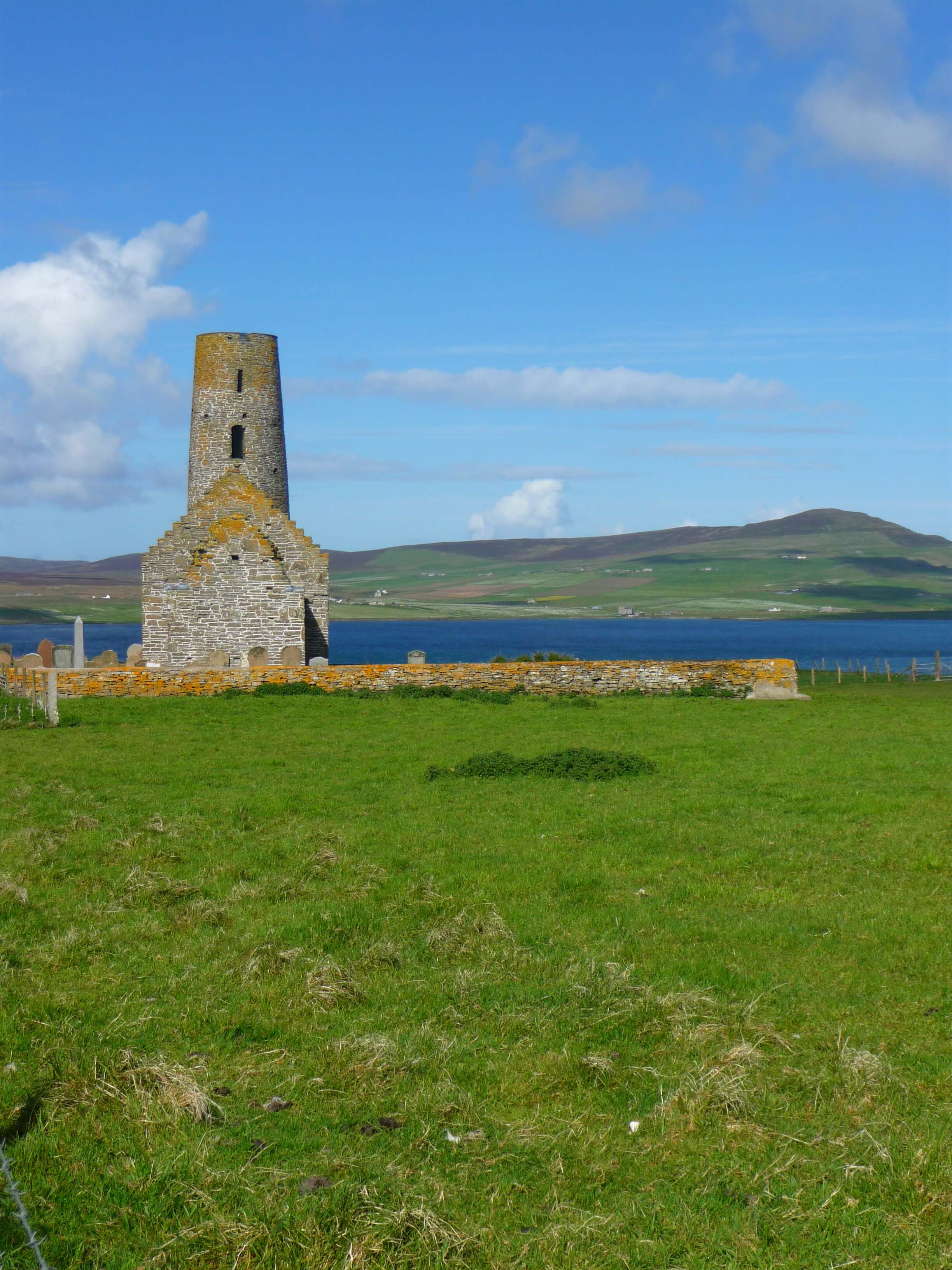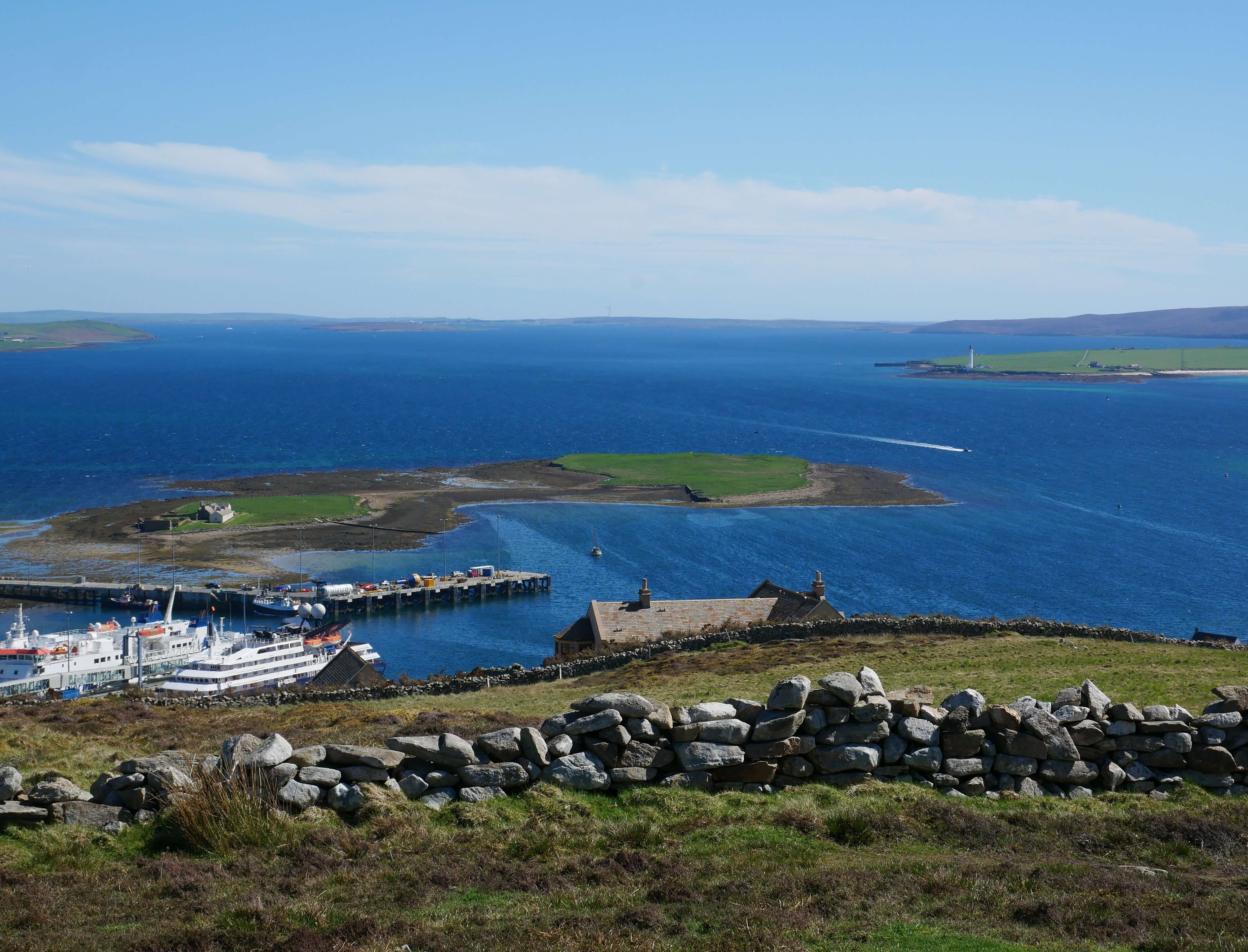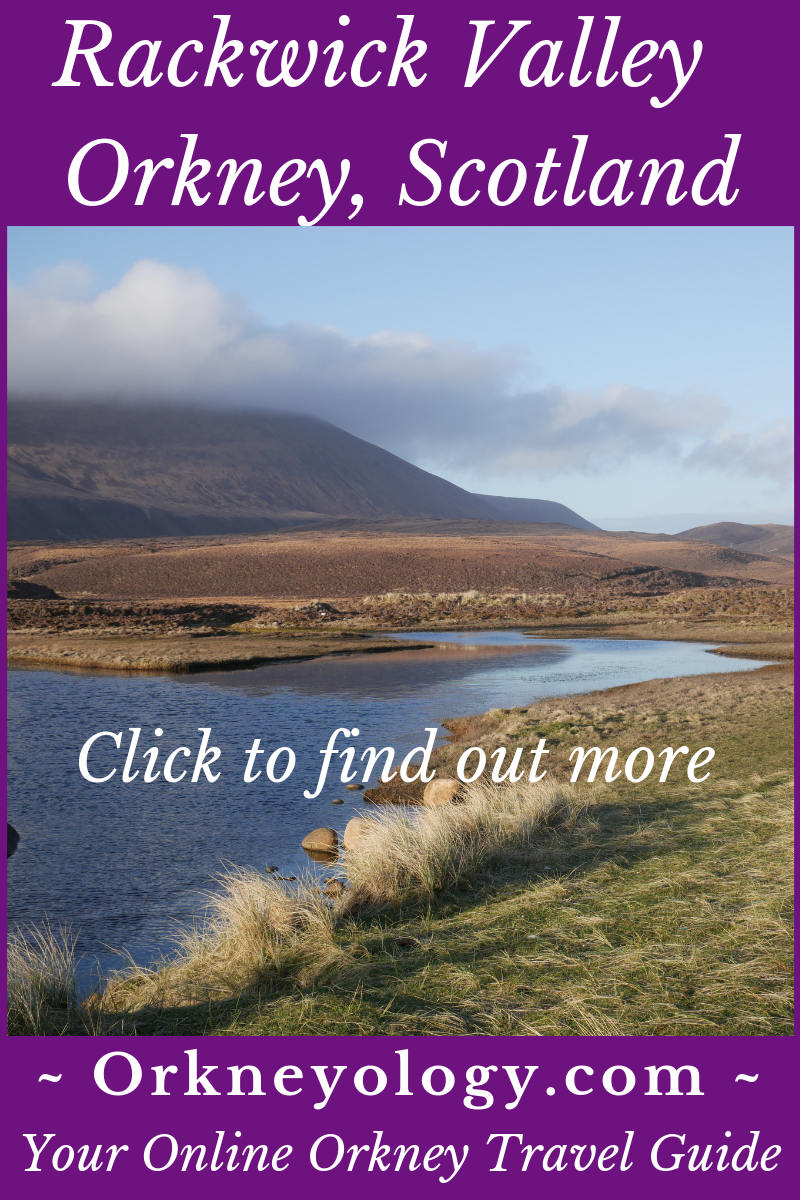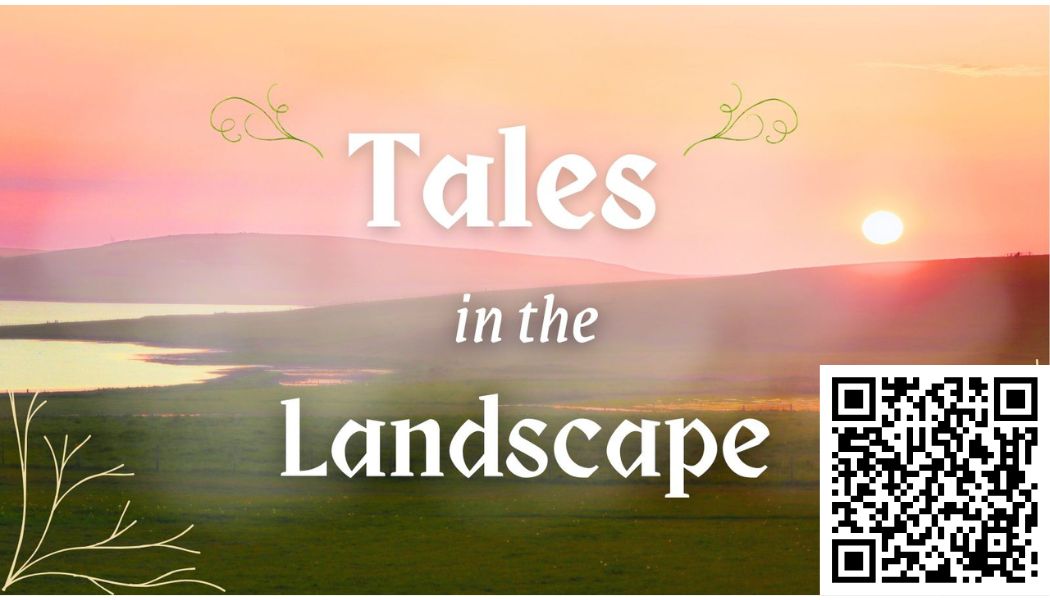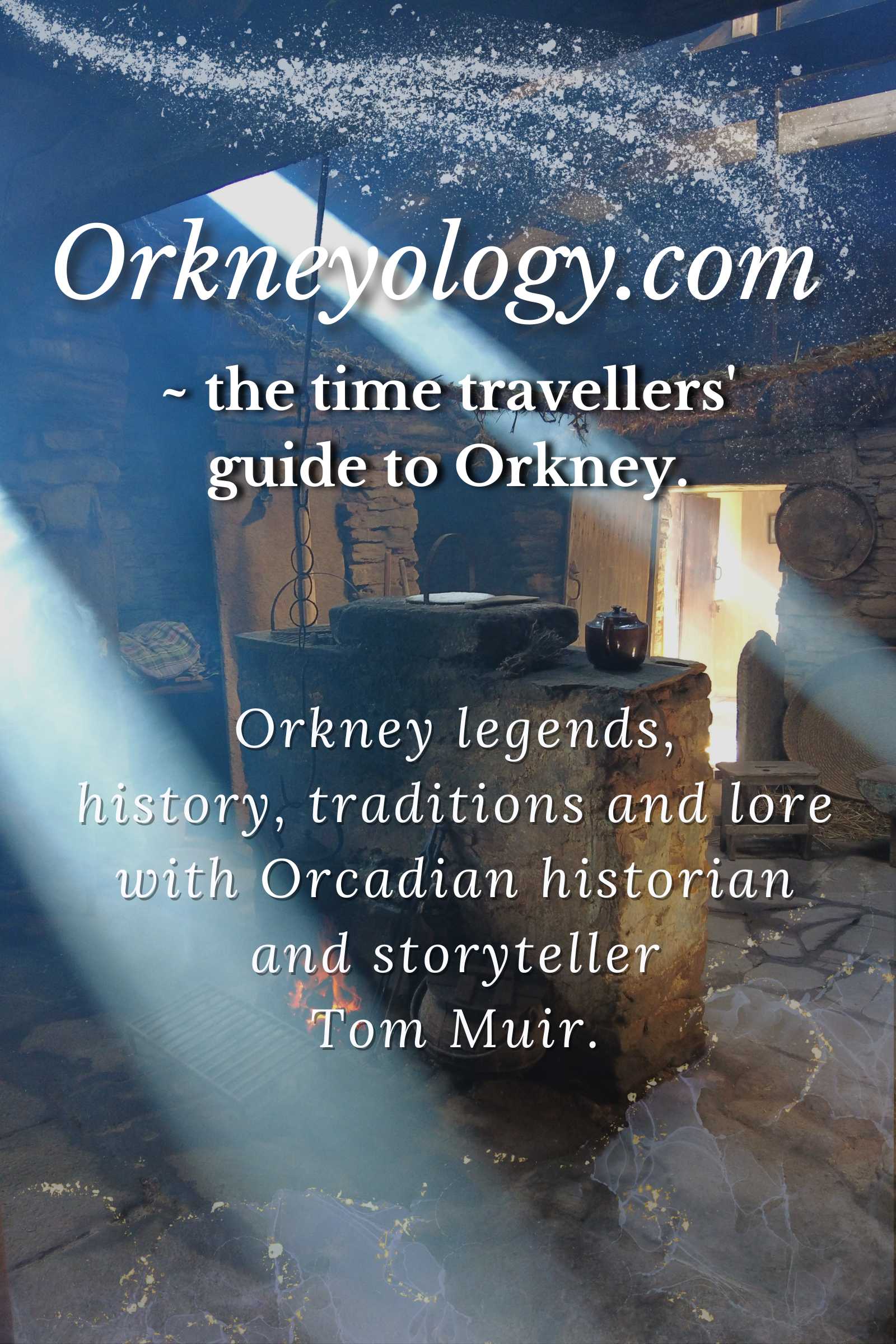Rackwick Bay - the most beautiful place in Orkney?
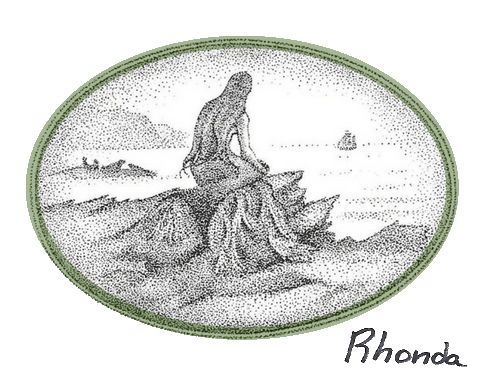
I'd heard the rumors.
They said there was a hidden valley ... pink sands, spectacular red cliffs, striped boulders and heather-swathed hills. Some said it was the most beautiful place in Orkney.
The Orcadian poet George Mackay Brown called Rackwick "Orkney's last enchantment" and "the hidden valley of light."
I had to see it for myself.
If you want to know why this place is so special to Tom and me, you can read our story.
It turns out that Rackwick is a special place to a lot of people. Tucked away on the island of Hoy's southwestern shore, the popularity of this lightsome valley continues to grow.
But somehow it still manages to feel like a secret discovery.
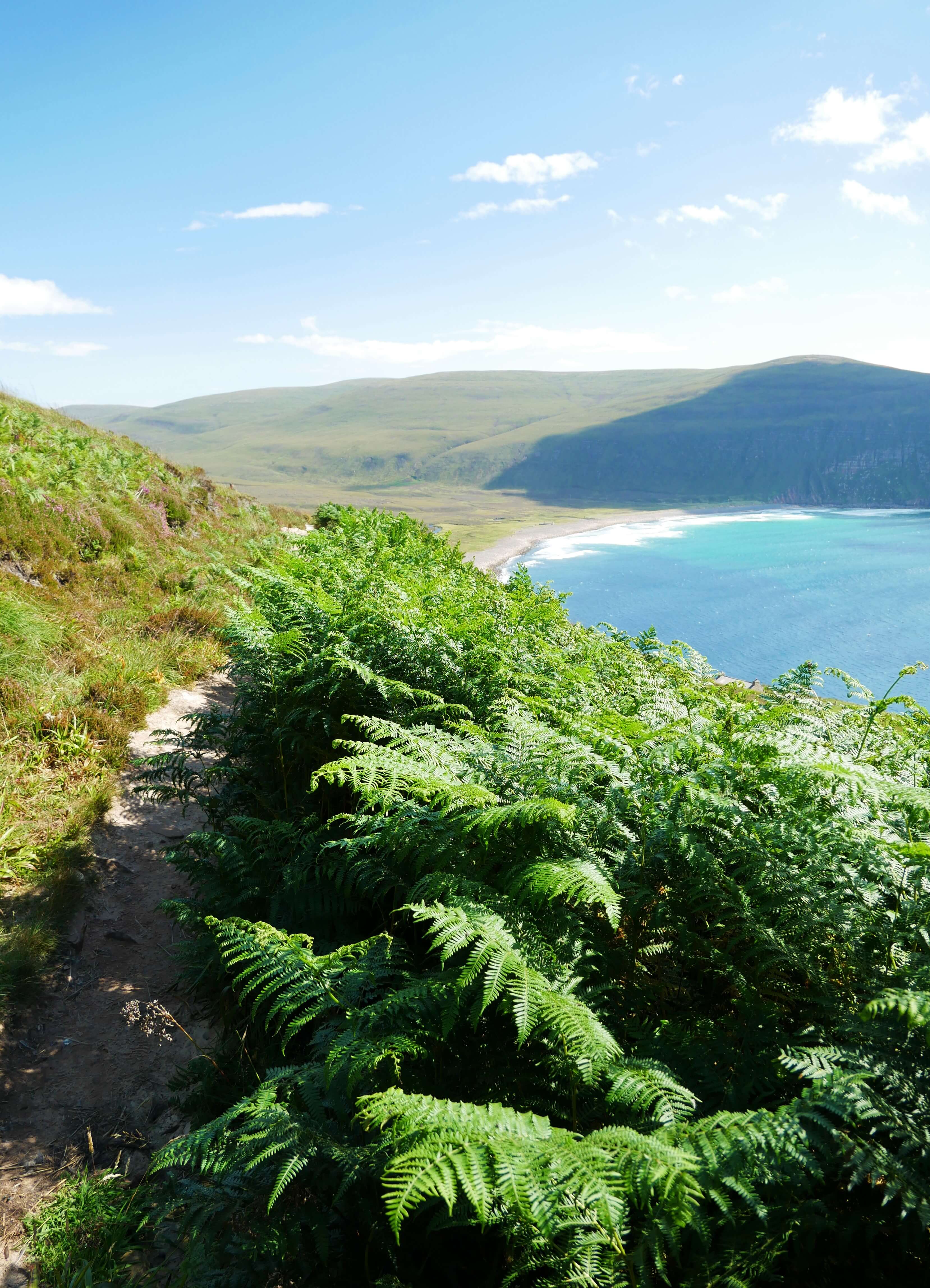
Rackwick means “wreckage bay,” in the Old Norse language of early Viking settlers. The name reflects the terrible fate suffered by many ships as they attempted to cross the Pentland Firth, even in more recent days.
Fortunately for us, this island sanctuary is much easier to get to now.
What's on this page?
Getting to Rackwick, walking from the ferry and where to stay
Things to see and do in Rackwick
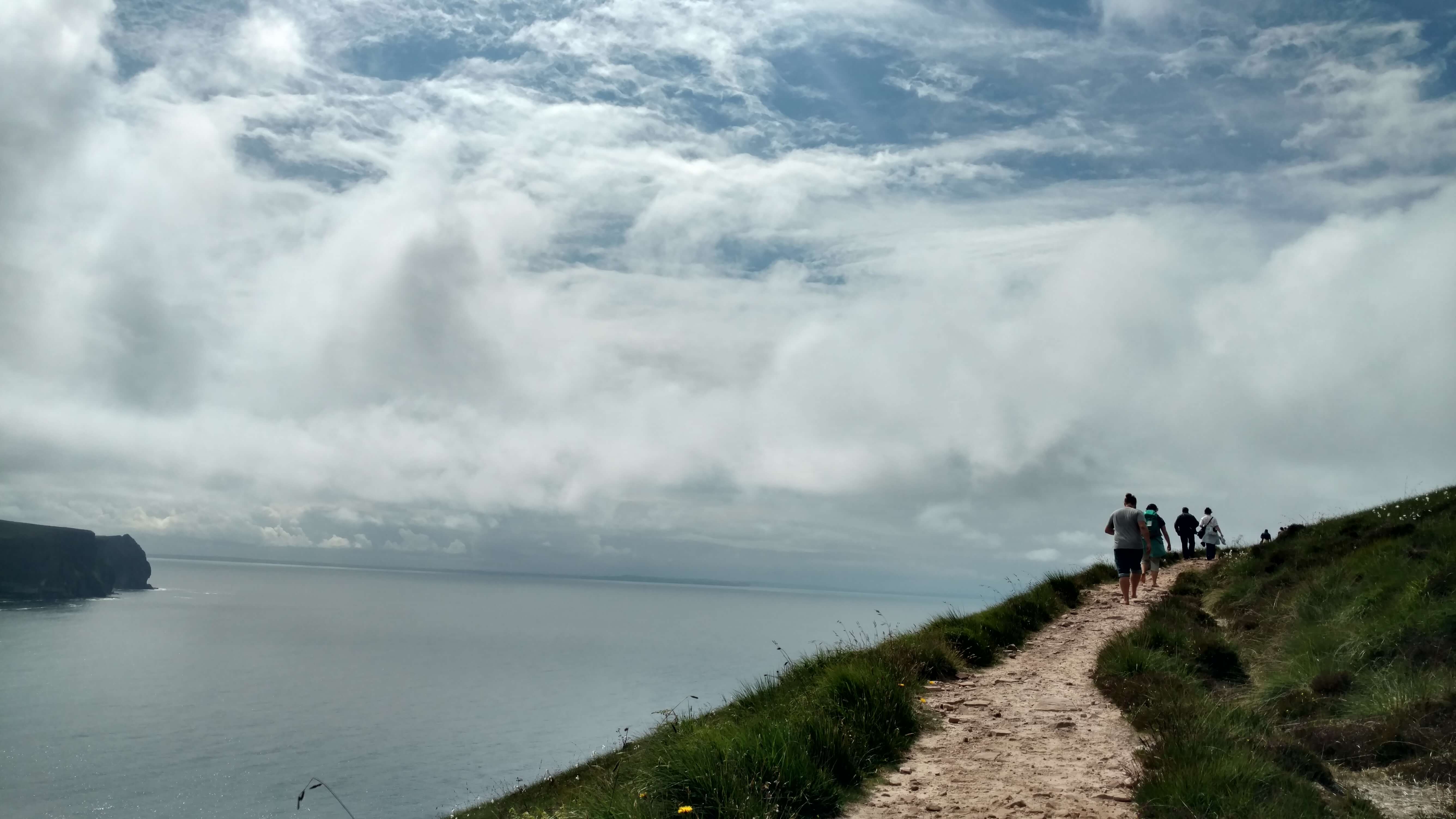
You might pay a visit to an old, old man ...
Rackwick is a pleasantly bustling place in the summer. Much of the traffic comes from eager hikers making the roughly five-mile uphill trek to the Old Man of Hoy - the tallest rock stack in Britain.

Sadly, the Old Man is exposed to such harsh elements that he's gradually falling to pieces.
The William Daniell sketch below was made in the early 1800s. It shows a much wider rock stack, with two legs and a sea arch.
See him while you can.
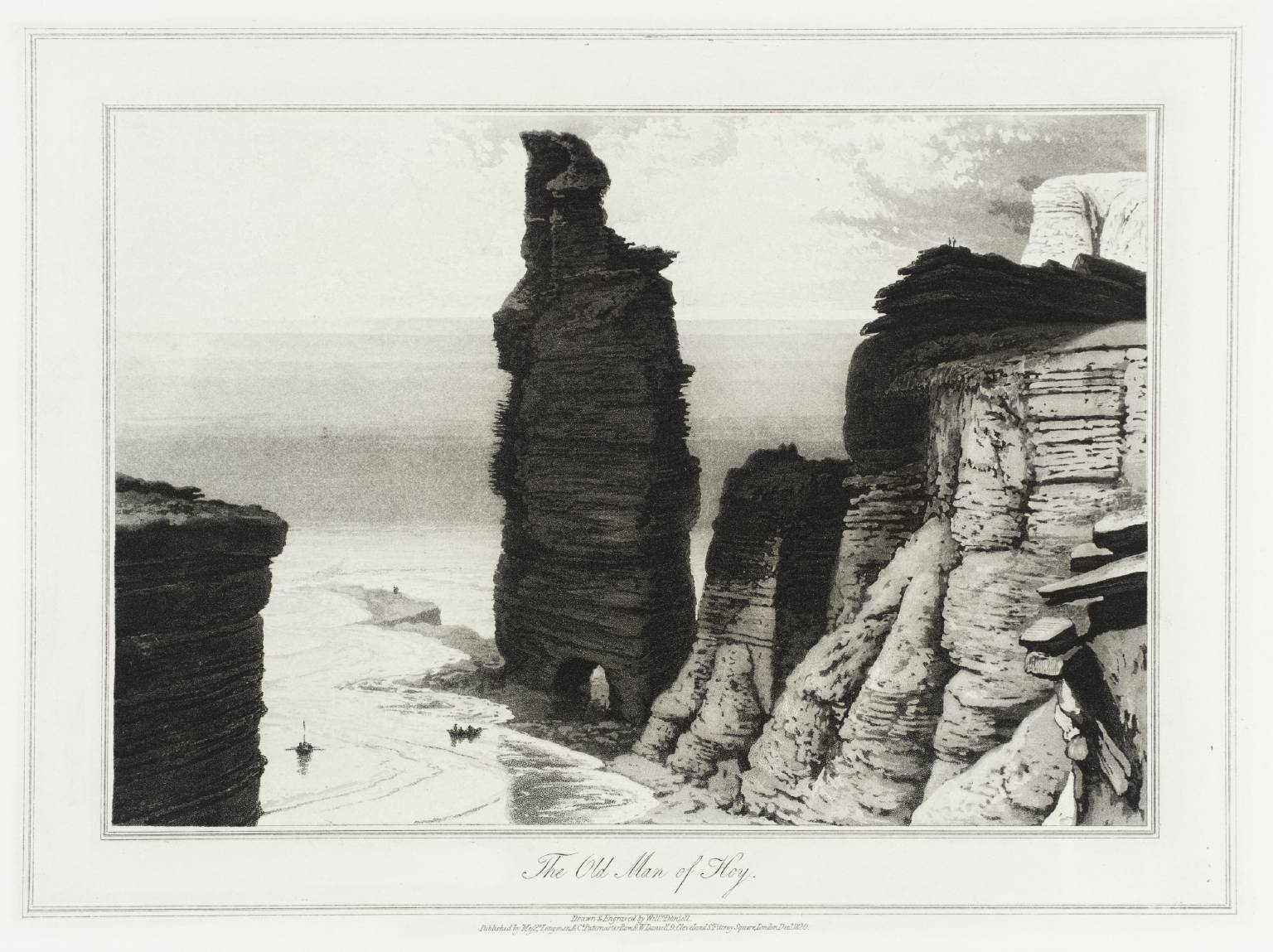
The Old Man of Hoy walk
The trail has been around since Victorian times. It climbs gently up Moorfea - "moor hill" - for much of the way, though it becomes moderately difficult in parts.
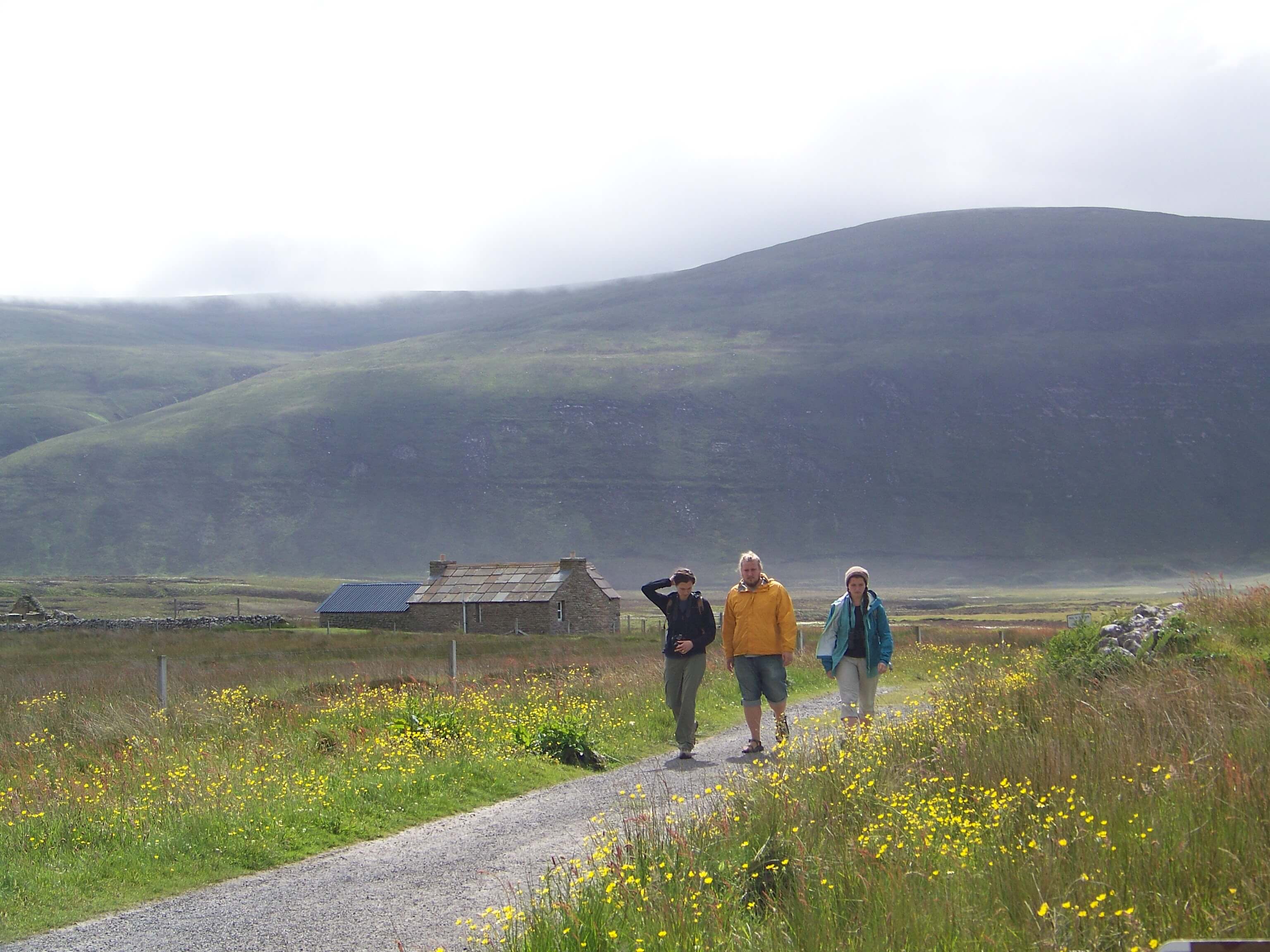
You can avoid the path's steeper beginning by starting at the hostel rather than near the beach area.
Park in the main car park that you'll see on your left as you come into Rackwick. (Hostel parking is only for guests.) Walk to the hostel and pick up the path from there. It's a bit longer, but the rise is more gradual.
The path can be slippery on a wet day, so you'll want decent foot gear, maybe extra socks. Definitely a raincoat. Storms brew up quickly in Orkney.
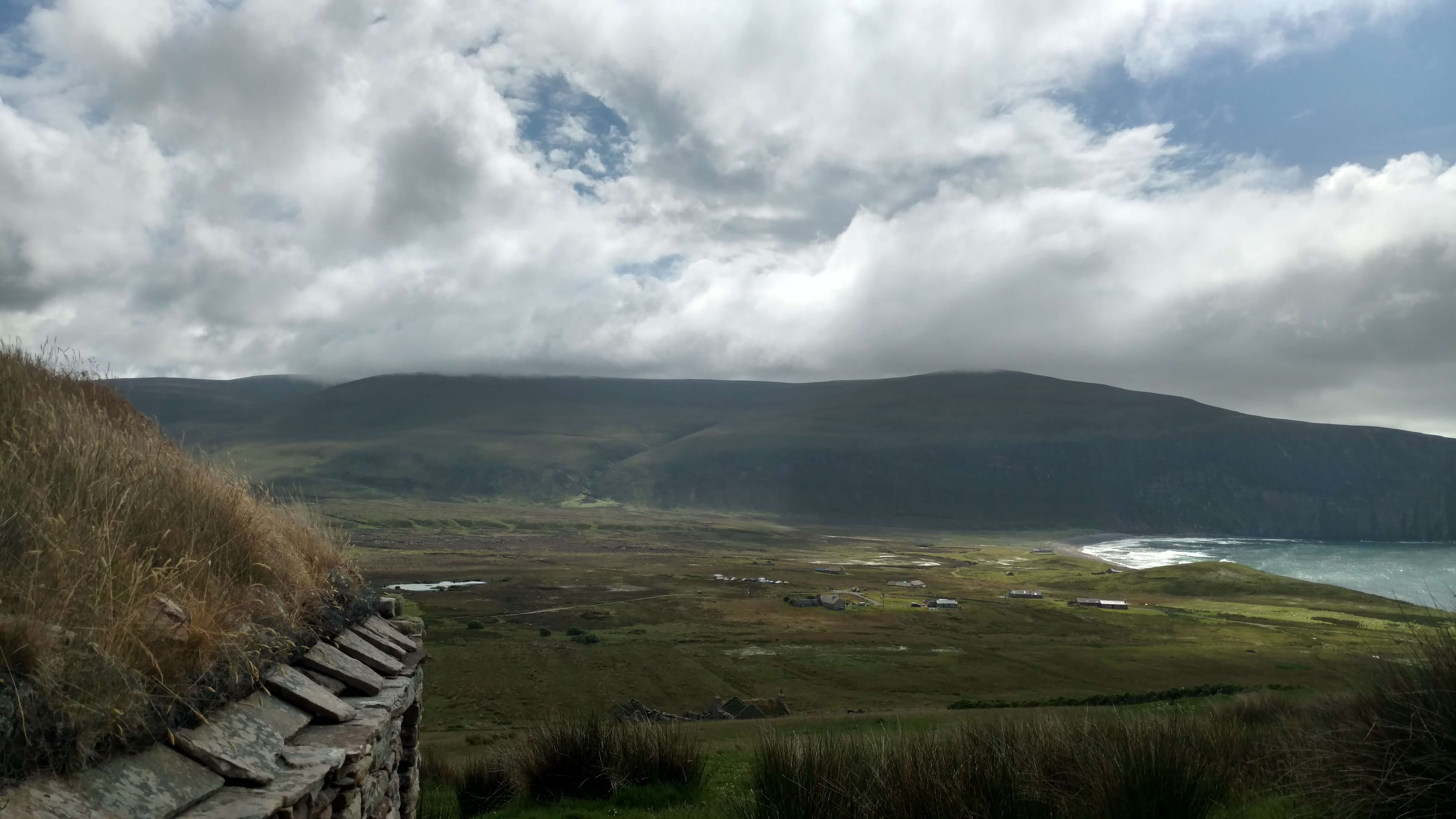
But what spectacular views of the Pentland Firth and Rackwick Bay!
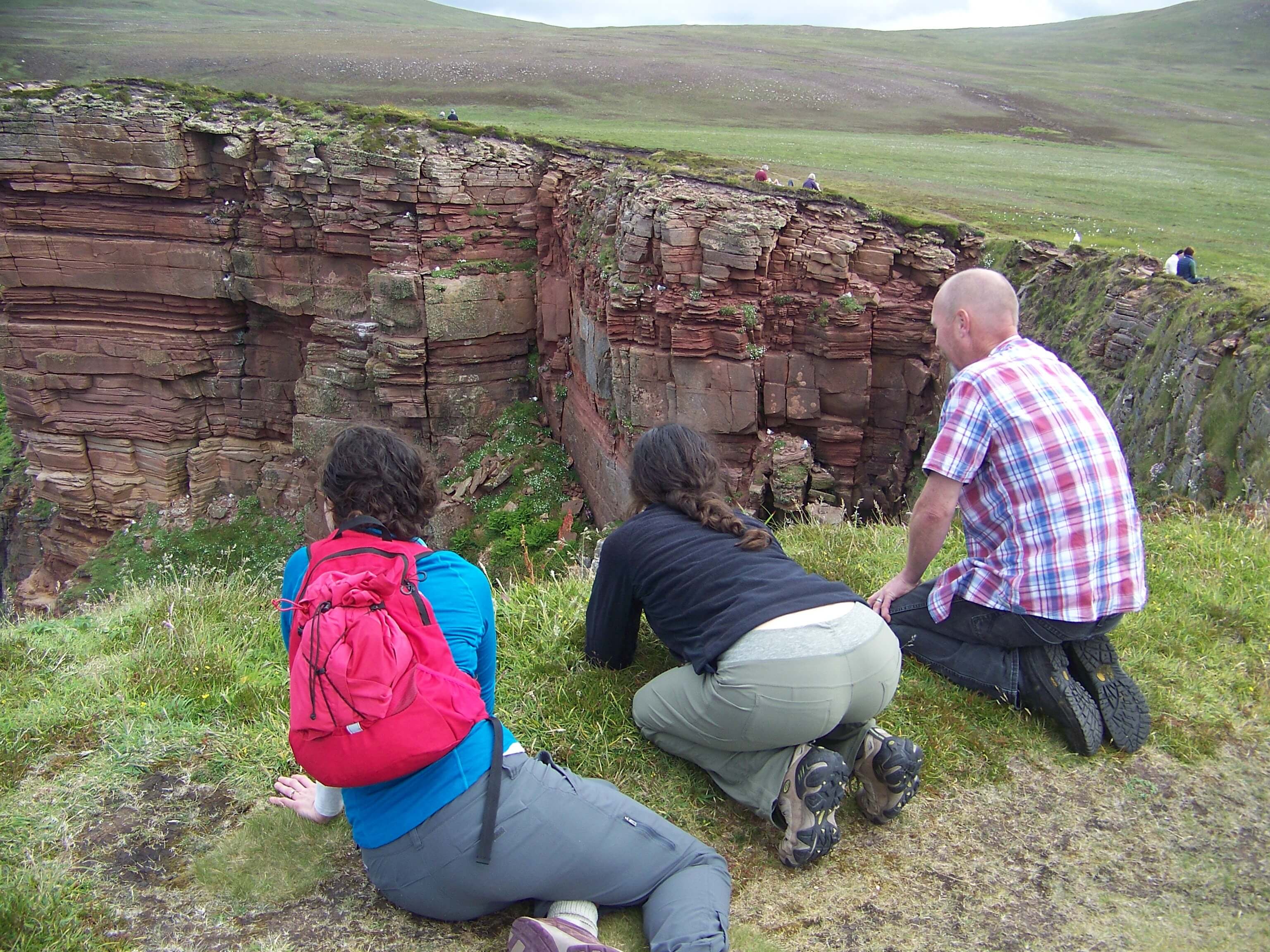
You might get an added treat if you come in summer - the chance to see puffins nesting in the cliffs.
The little darlings.
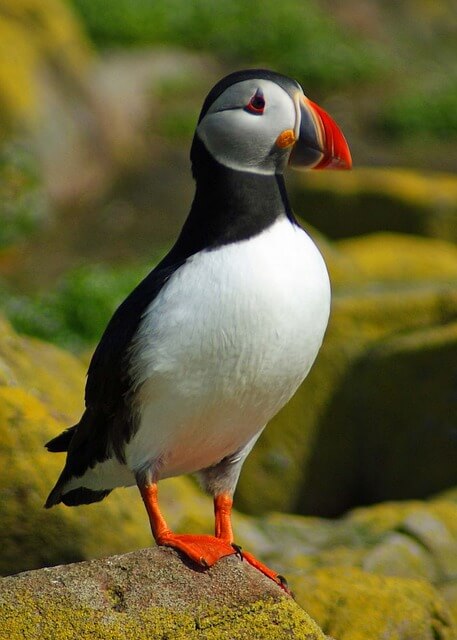
The roughly five mile round trip takes around three hours. Most people can do it faster ... but why?
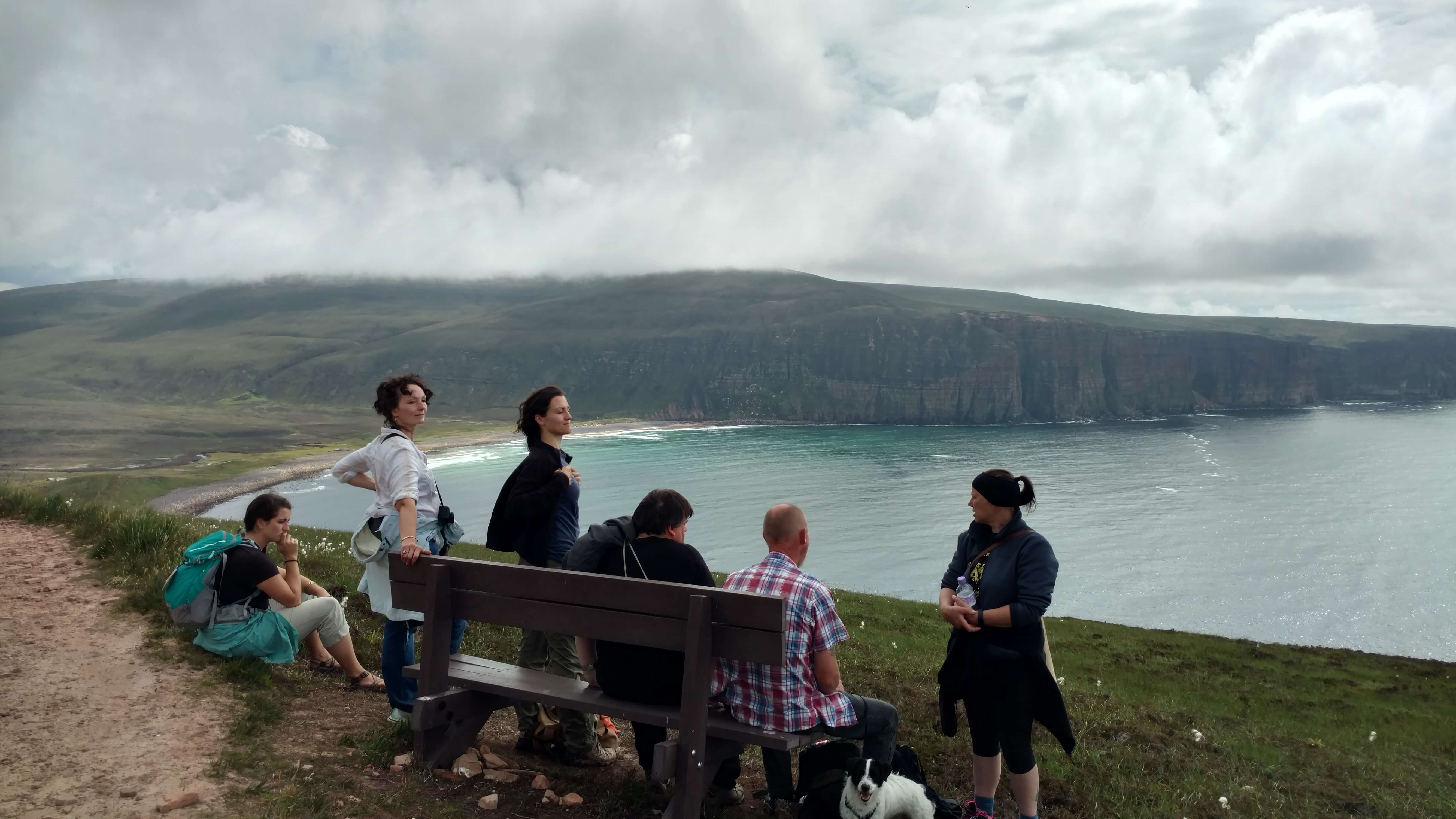
If you still have the energy for it after you visit the Old Man, you can continue hiking up the coast to Britain's highest vertical sea cliff - St John's Head.
This will add about two hours to your trip time, and the path is more rugged.
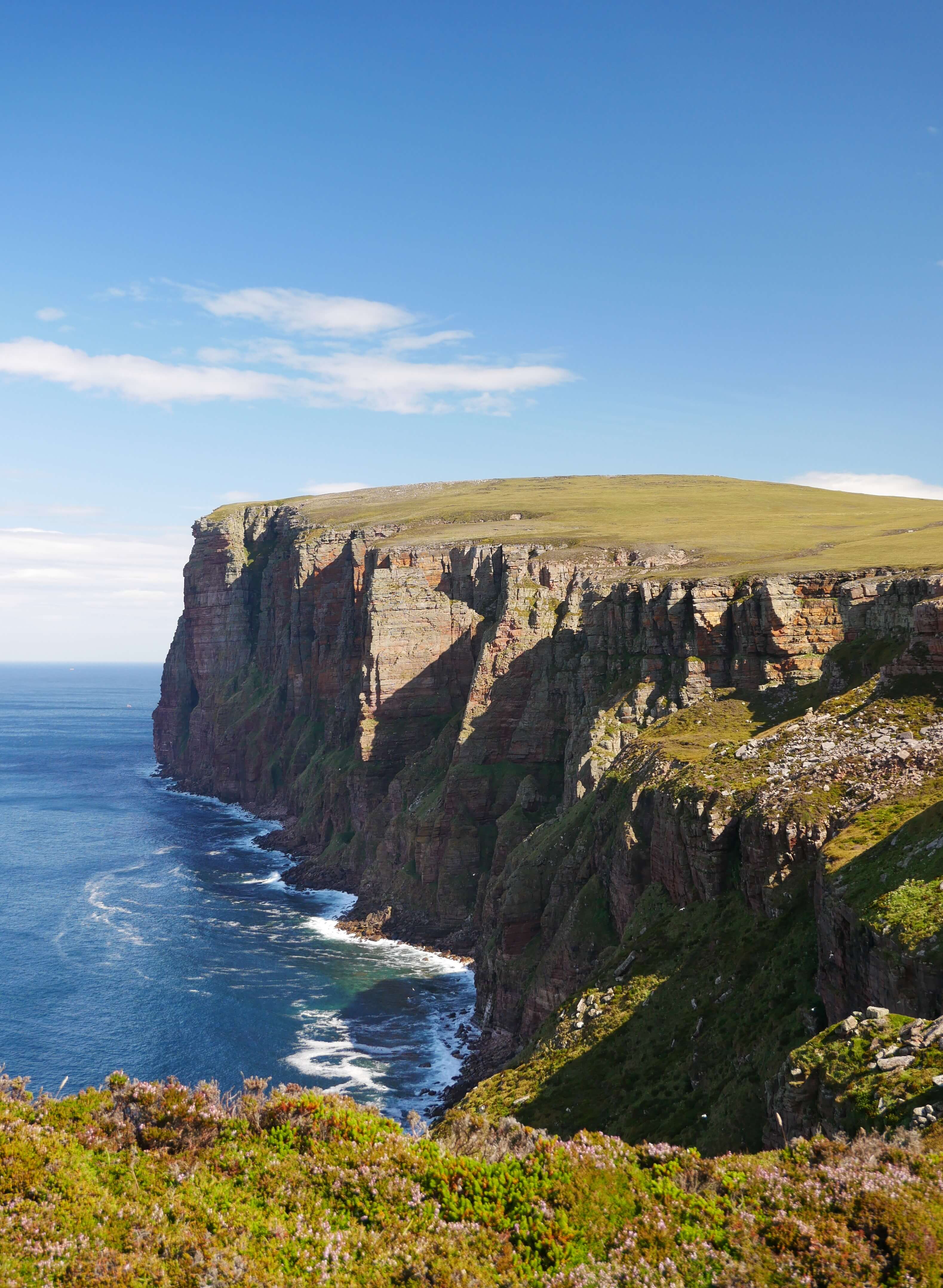
This place is named for the Johnsmas (midsummer) bonfires that people celebrated here until about 1860.
Island safety: Please be careful when navigating cliff areas. Edges can be undercut in a way that's invisible from the surface. Stay well away from the edge. And don't trust the wind, either - it can be very pushy at times.
Now, if you really know what you're doing, you might want to ...
Climb the Old Man of Hoy
People achieve this feat regularly, now. For all we know, some brave souls might have done so in the past, too. Orcadians used to gather birds' eggs from cliffs to supplement their diet, though whether they'd climb the Old Man of Hoy for a few eggs is questionable.
The first recorded climb was in 1966. One of the climbers, Chris Bonington, went on to climb Mount Everest. He returned in 2014 to climb the Old Man again at the age of 80!
Lifelong Rackwick resident, Jack Rendall, shared his memories of the climb with the Hoy heritage project. You can listen here.
There's got to be an easier way, you say?
There is. If you come to Stromness by ferry, you'll sail past him on the way. The MV Hamnavoe departs from Scrabster, mainland Scotland, several times most days. It arrives in Stromness about an hour and a half later.
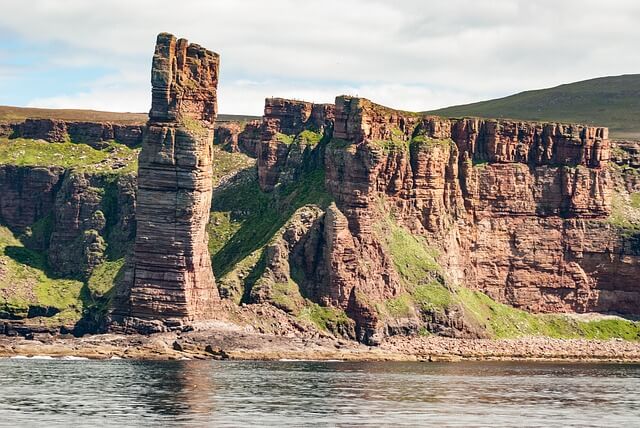
If you cross on a sunny day, you'll see the Old Man and St. John's Head gleaming copper-red as you pass by.
Get a feel for the past ... stop in at the Craa's Nest
Up the hill on the Old Man of Hoy path as approached from the hostel, you'll find the Craa's Nest.
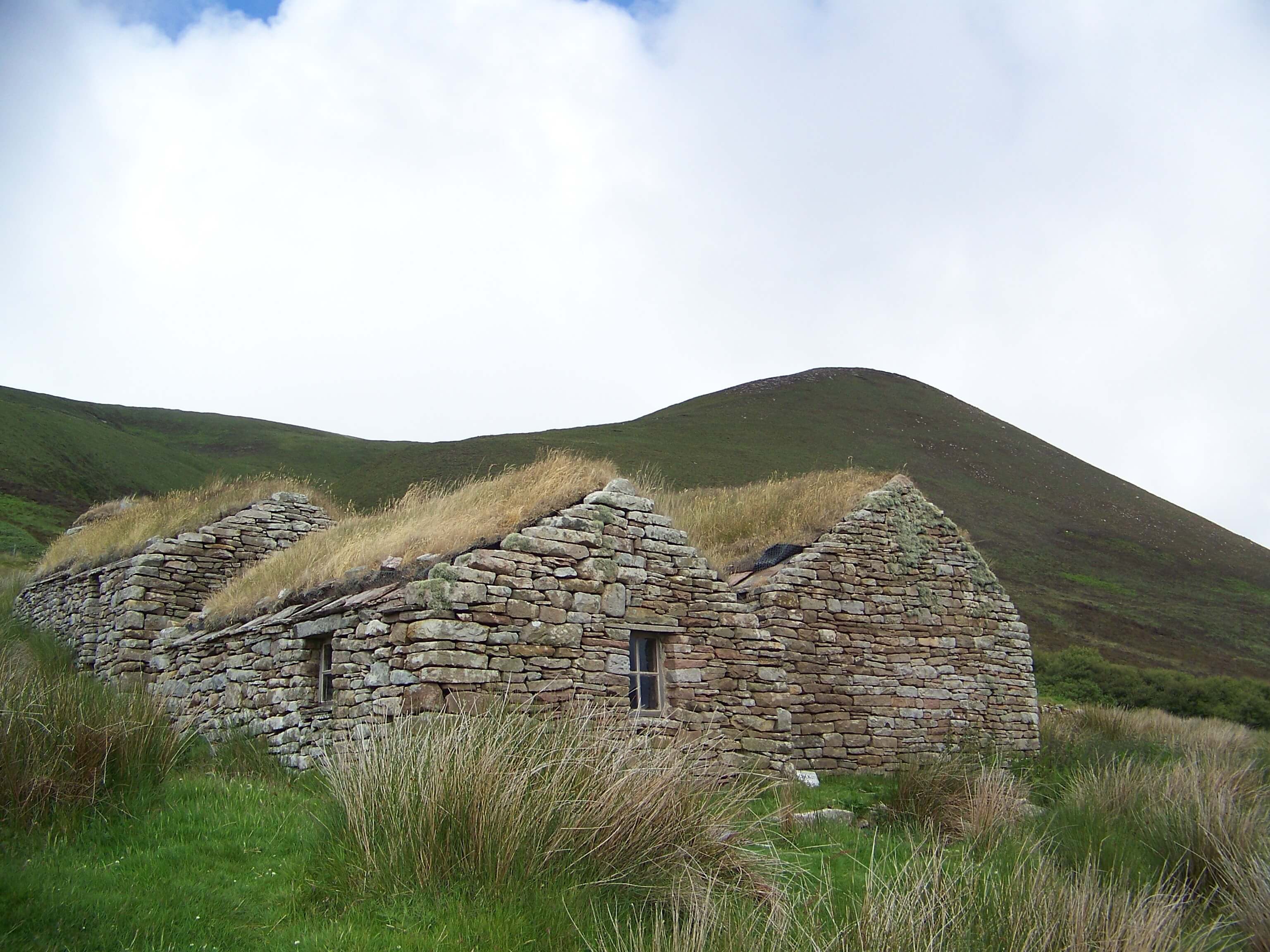
The croft's name is Orkney dialect for "crow’s nest," referring to the lookout high above the deck of a whaling ship where crewmen would watch for spouting whales.
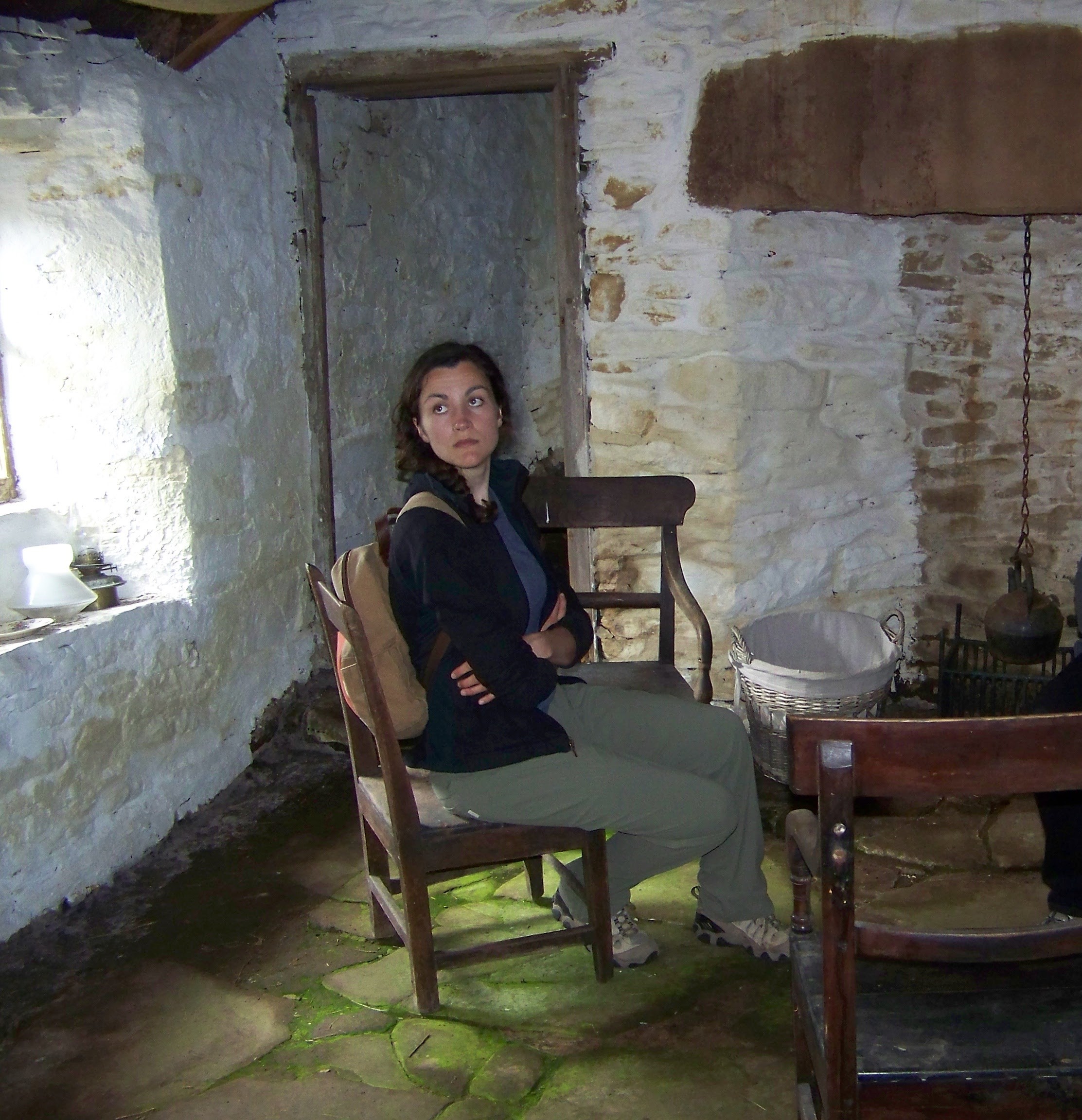
This traditional croft house and steading has been restored to its original state.
It's become a poignant museum that reflects early 19th century living in Orkney.
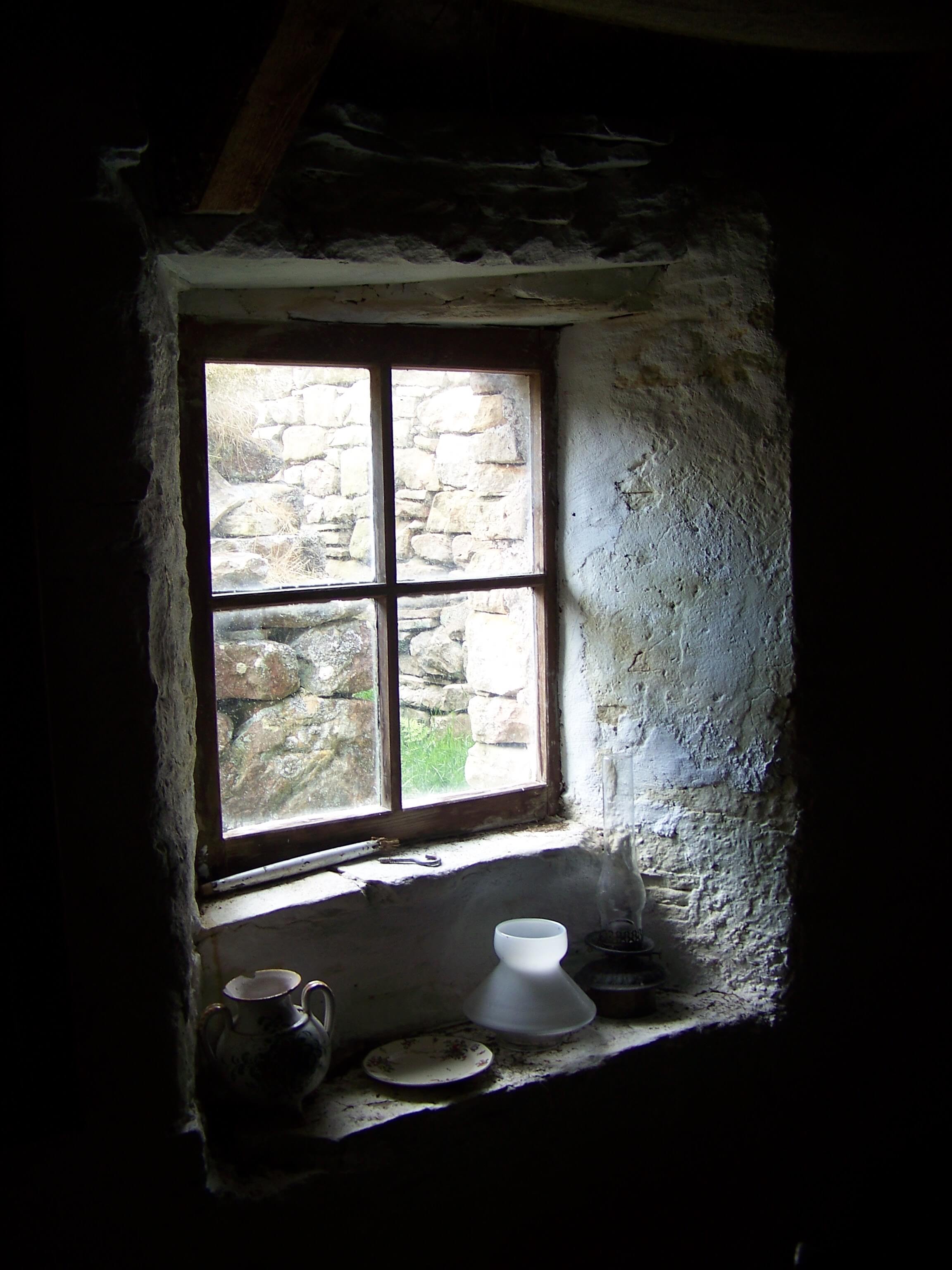
If you plan to hike the trail, you might want to do that first and explore the museum at your leisure on the way back down.
Go as early as possible if you want to beat the crowds.
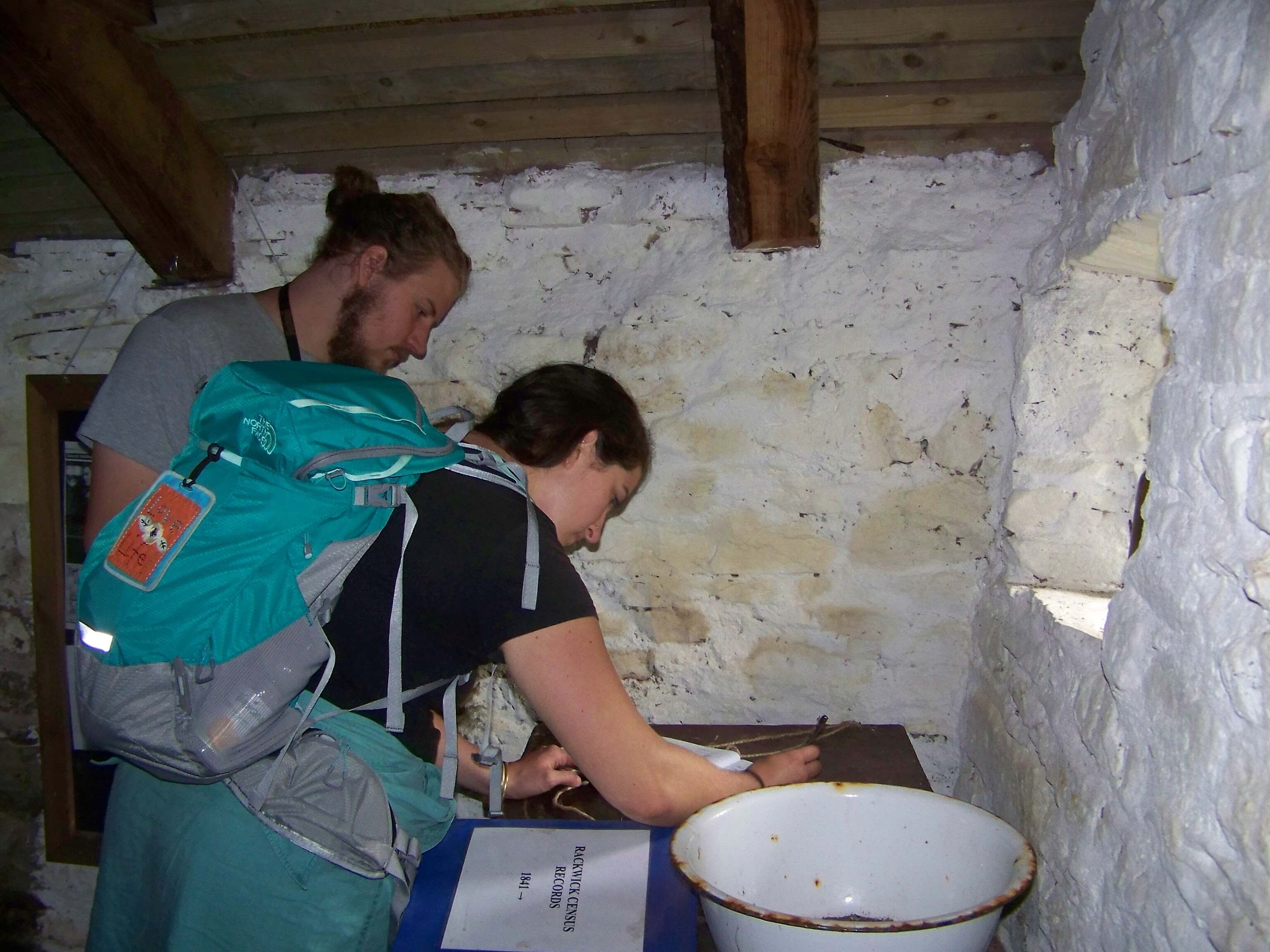 Don't forget to leave a message in the guestbook!
Don't forget to leave a message in the guestbook!There's also a byre, where the cattle were housed, and a kiln, used for drying black oats and bere.
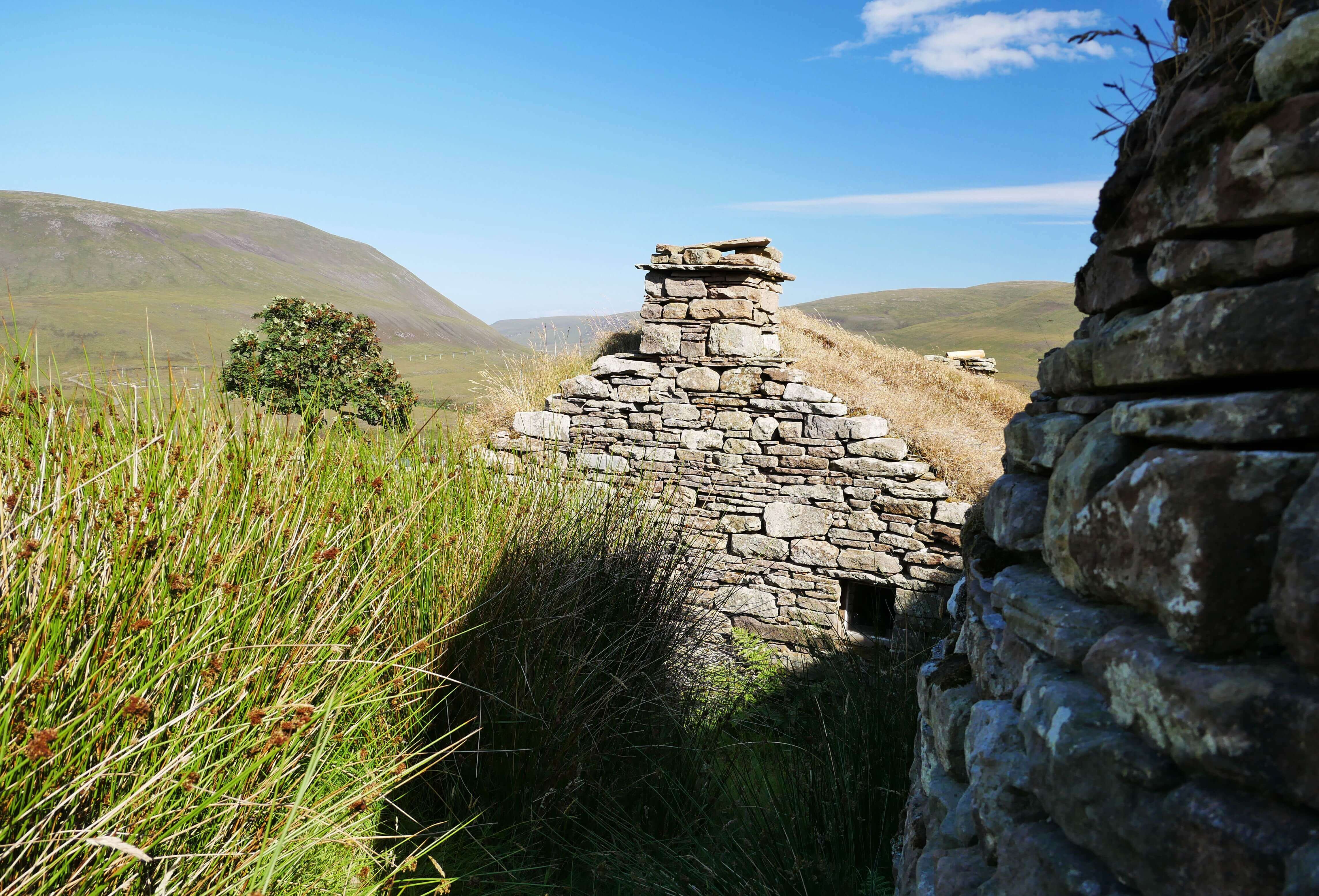
Bere (pronounced the same as the forest creature) is a primitive form of barley that's enjoying a revival.
You'll find bere bannocks served in cafes. You can even buy locally-produced bere meal in Orkney shops.
Take time to daydream on a pale pink beach ...
Ah, Rackwick Beach!
You can see Scotland from here, blue hills across the Pentland Firth.
Crumbled bits of red and yellow sandstone leave a blush of pink and cream swirling prettily along the strand. The sands are snatched up by the rising sea and tossed down in a fresh pattern with every tide.
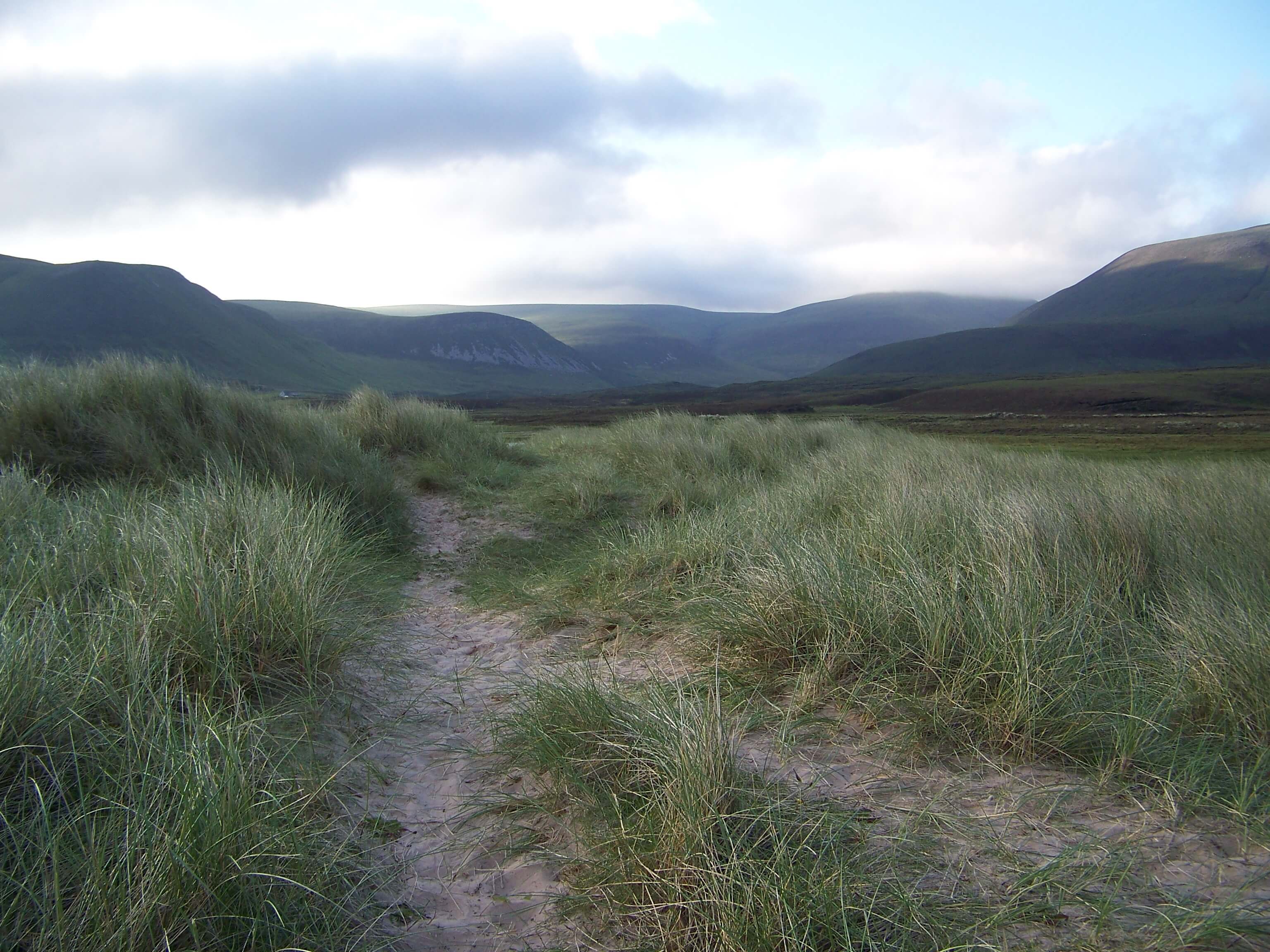
If you're lucky enough to stay overnight, you'll want to make your way through the marram grass early in the morning to watch the sun rise.
In the interest of full disclosure, you'll have to get up pretty darned early to watch the sun rise in summer ... like 3 am. But still.
(Tom the night owl suggests it's easier just to stay up late.)
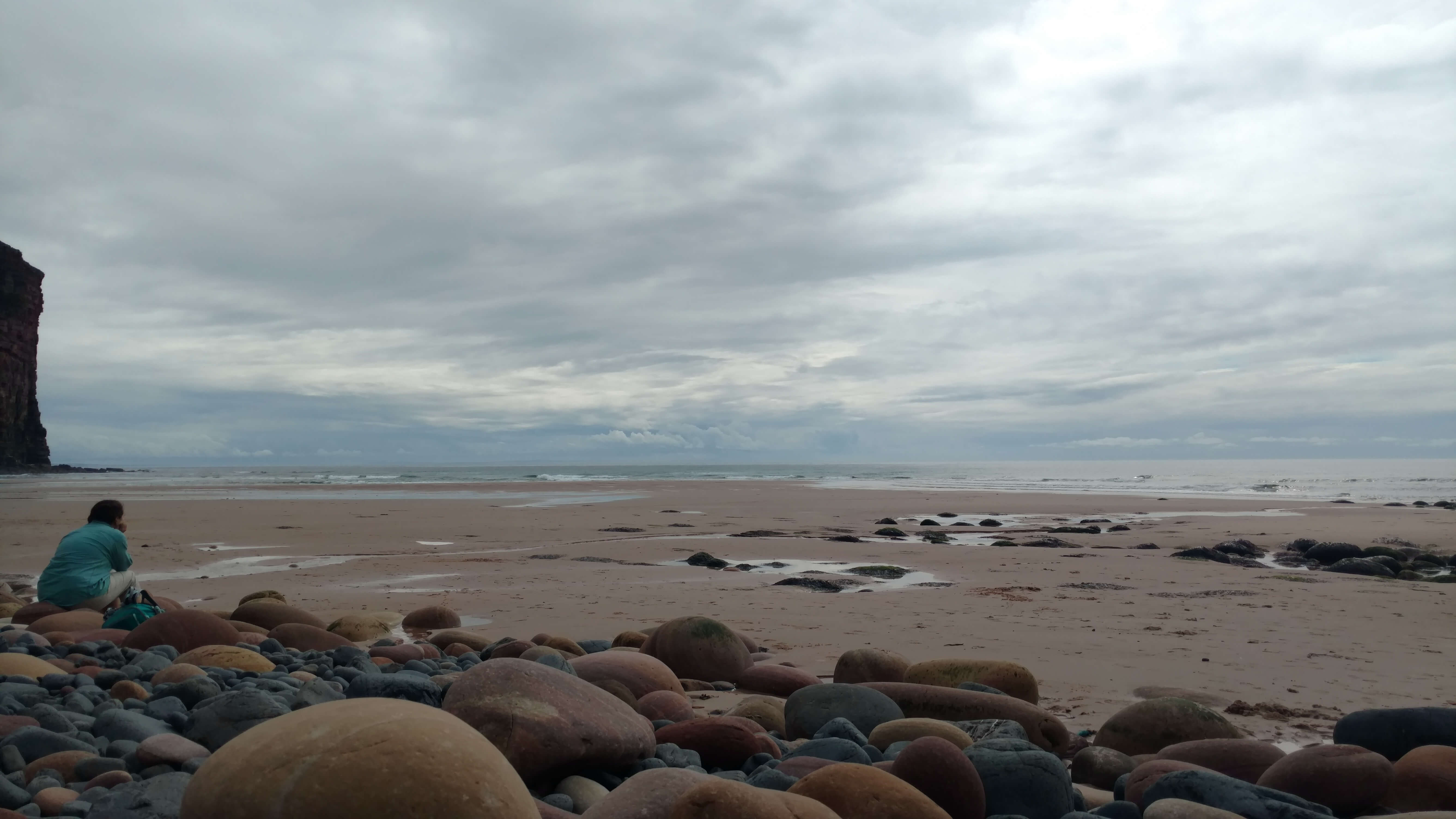

Want to hear a few stories about this enchanting place? Orcadian storyteller Tom Muir (my lovely husband) tells a few traditional tales here. They were recorded at an event in 2010 to benefit the Hoy Trust.

Take time to explore the bothy, where you can camp for free!
Above the beach is the old croft of Burnmouth, a traditional bothy offered for everyone's enjoyment by Hoy Trust and the good folks of Hoy.
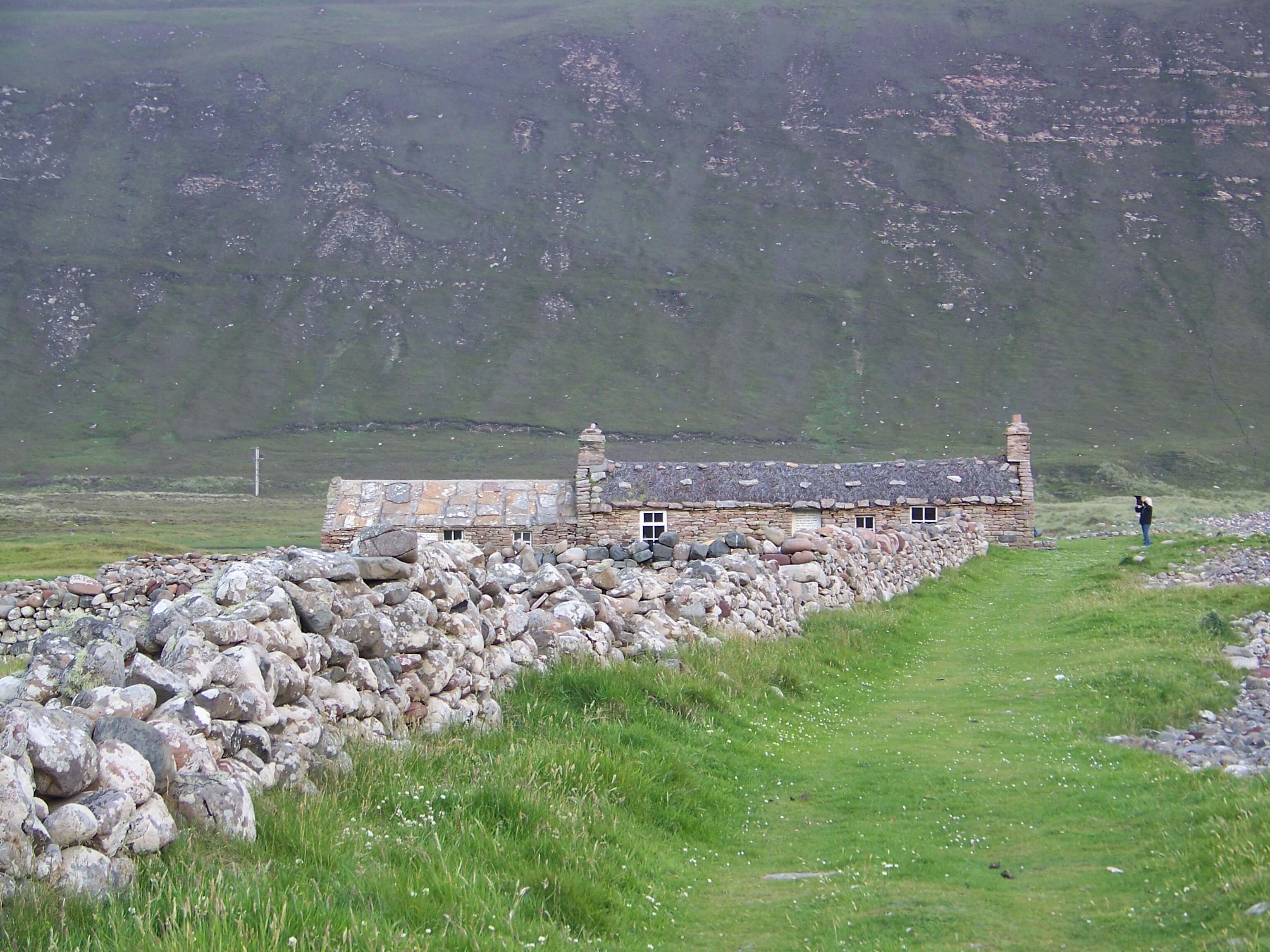
It's fun just to poke around inside the house, but you can camp here, too. There's a place to light a fire, a few bits of furniture and maps and notices on the wall.

The bothy is strictly rough camping, but it's a roof and a place to make a fire if you get caught in bad weather.
Campers can sleep inside or pitch a tent in the kailyard, where the family who lived here would have had a kitchen garden. The stone wall around the yard gives a bit of relief from zealous winds.
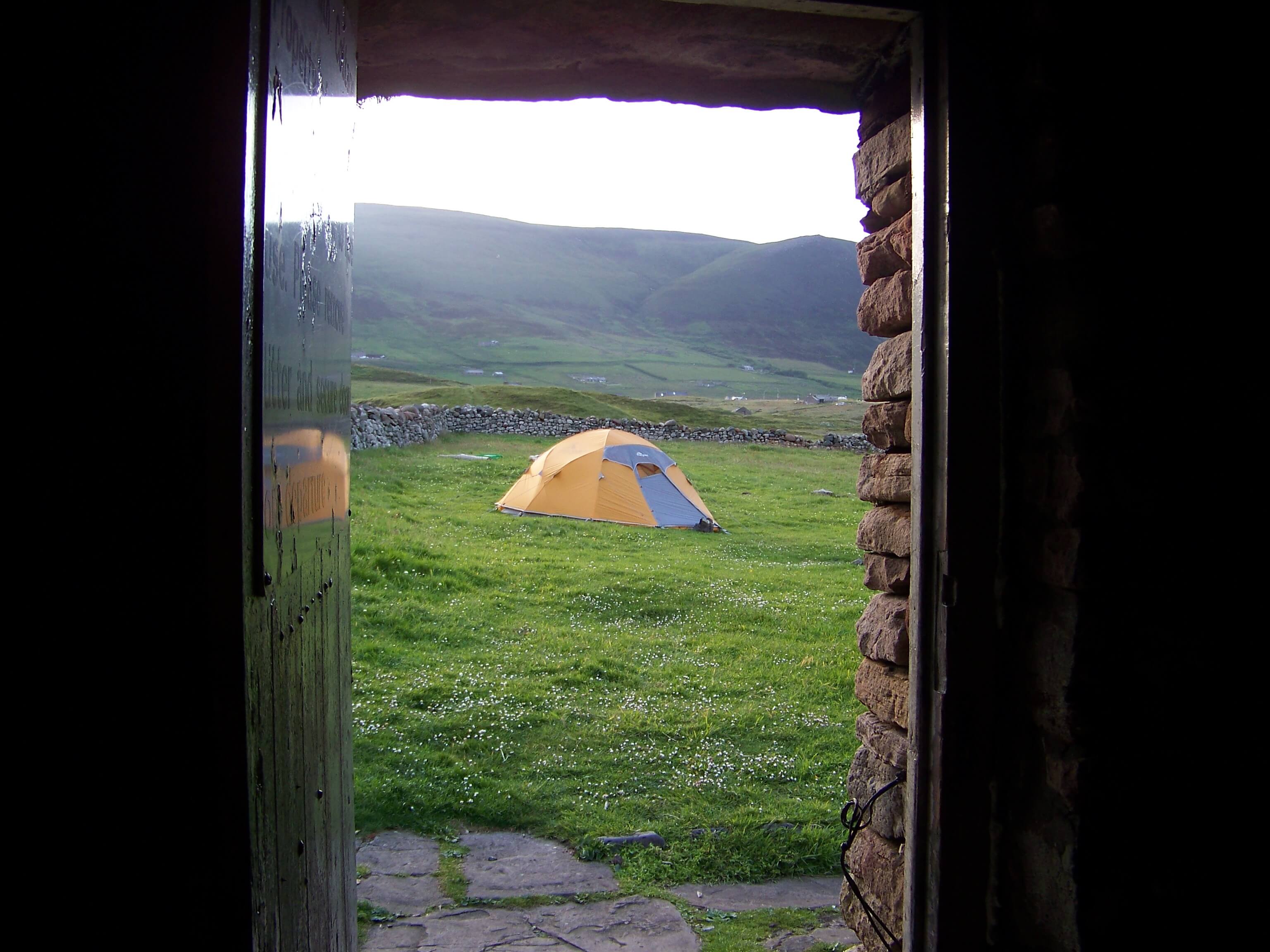
No booking is required, so you're likely to find the bothy in use by other campers. Fancy sitting around a campfire swapping stories with new friends?
Island ettiquette: The RSBP asks visitors to please contain campfires in designated areas. Fires on the moorland can quickly get out of control. Hoy suffered a devastating fire in 1984, which destroyed 1400 acres of moorland before being put out days later.
Needless to say, courteous guests leave the place as they found it ... or even better! Find wild camping in Scotland tips on this helpful blog.
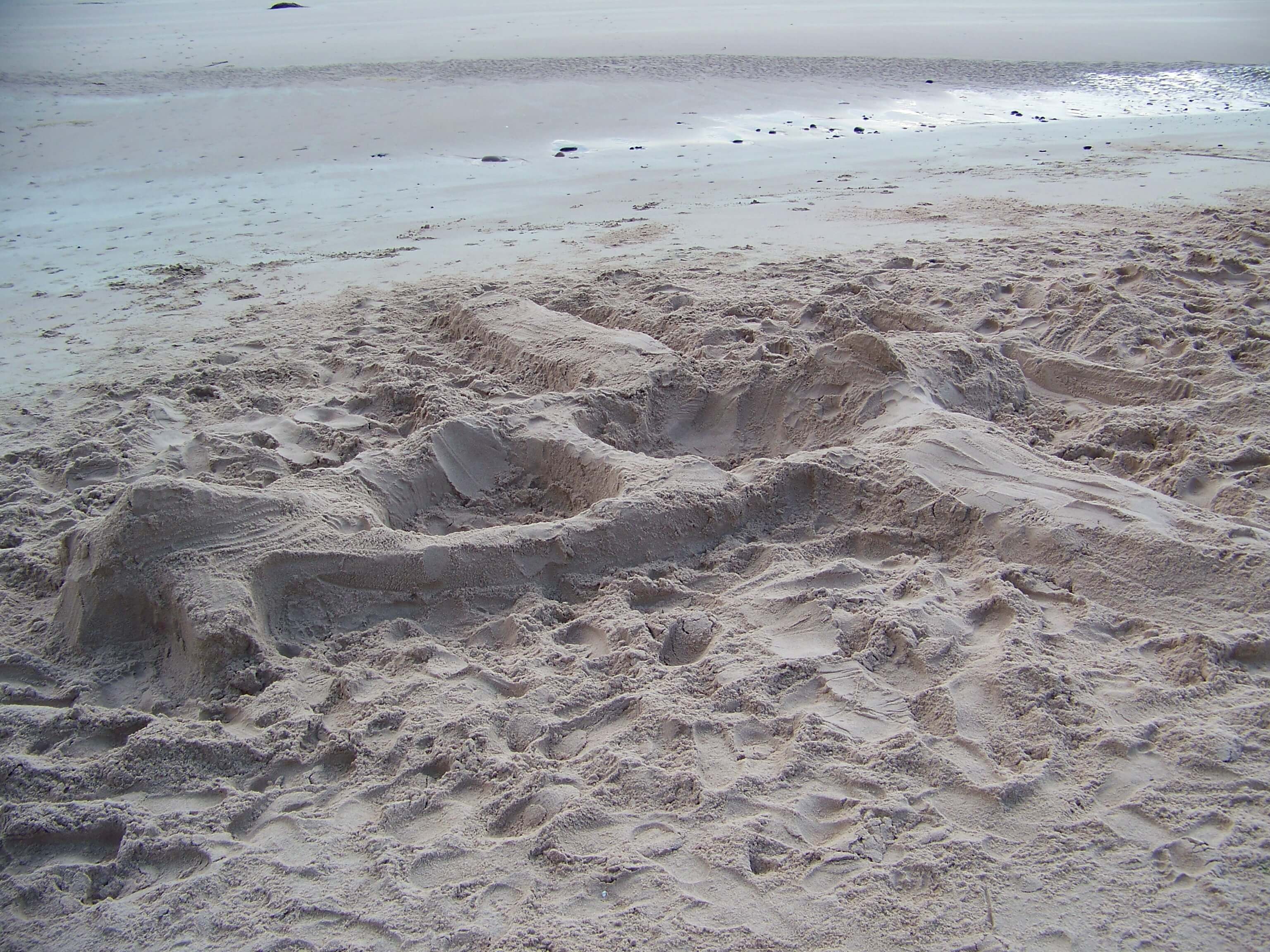
Imagine living in one of the abandoned crofts
You'll see them scattered about - sad, empty husks that were once homes. Happily, some of the old crofts have been rescued and made into holiday homes.
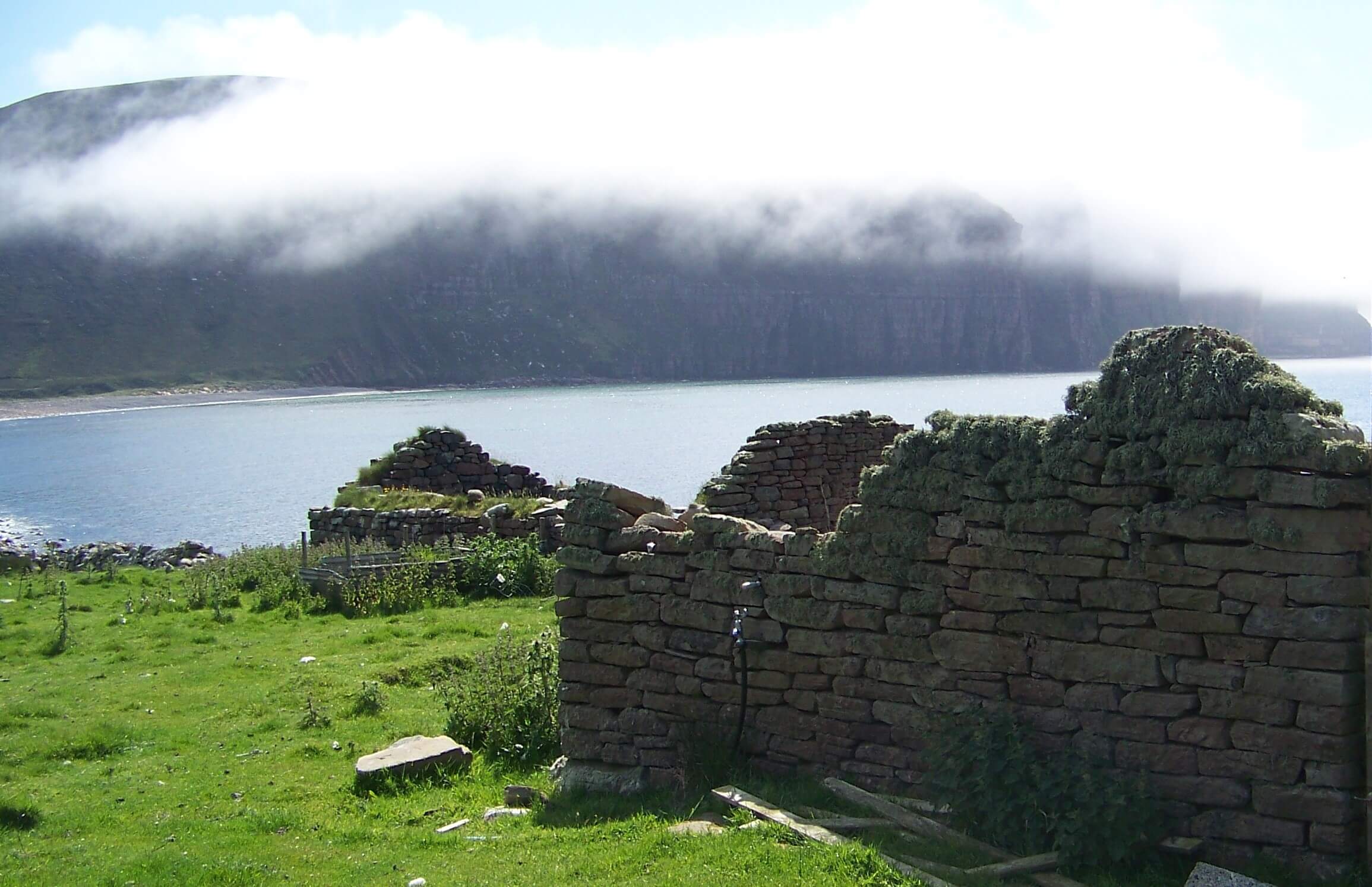
Rackwick was once a thriving community of "fishermen with ploughs." Amazingly, it's population once dwindled to a single man - Jack Rendall. Watch a beautiful short film about Jack here.
Rackwick is for nature-lovers
A large RSPB reserve (Royal Society for the Protection of Birds) covers most of the uncultivated land in the north of Hoy. The range of wildlife and habitats have earned the area special status as:
- Site of Special Scientific Interest (SSSI)
- Special Protection Area (SPA)
- Special Area for Conservation (SAC)
- and National Scenic Area (NSA) for its beauty

As you make our way around the area, you'll see wild moorland, sub-alpine heath, blanket bog and tiny maritime wildflowers ....
Possibly great sundew, alpine bearberry, fragrant orchid and dwarf cornel.
You'll definitely see heather - lots of heather. It blooms in late summer, swathing the hills in spectacular purpleness.
About Berridale wood ...
If you walk to Rackwick from the ferry using the path from Moaness pier to Rackwick, you'll get a glimpse of the most northerly native woodland in Britain, Berridale Wood. It's on your right after you pass the first large hill, called Cuilags.
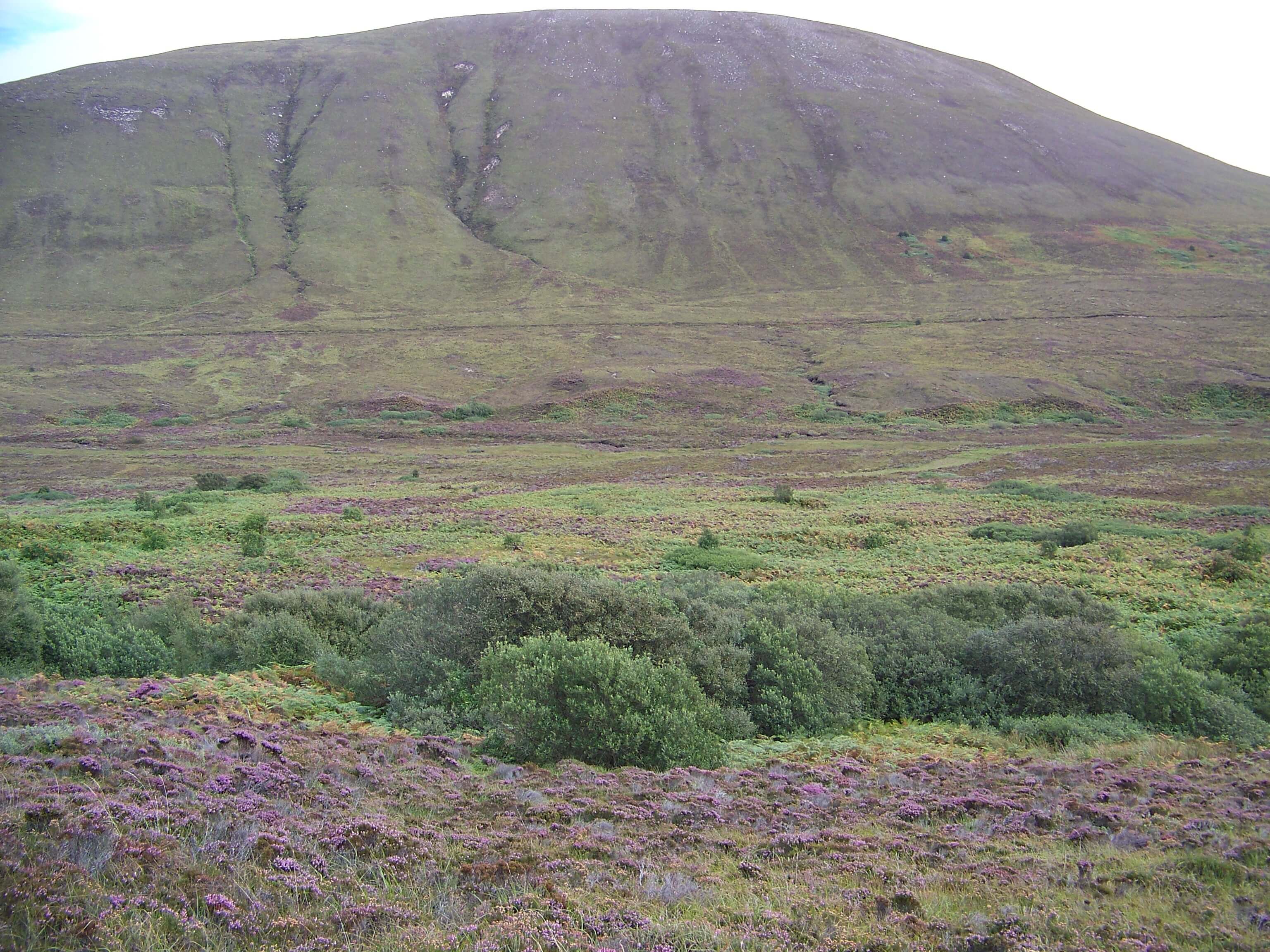
Berriedale boasts an unusual collection (for Orkney) of hazel, rowan, downy birch, willow and aspen trees. Its understory is heather, roses, blaeberry and honeysuckle.
It's notable because there are so few trees in Orkney that weren't purposely planted by wistful landowners, and for another reason: this ancient strip of woodland is a relic surviving from Mesolithic Orkney - the time when people first began to settle here.
All that being said, I wouldn't try to walk to Berriedale without a guide.
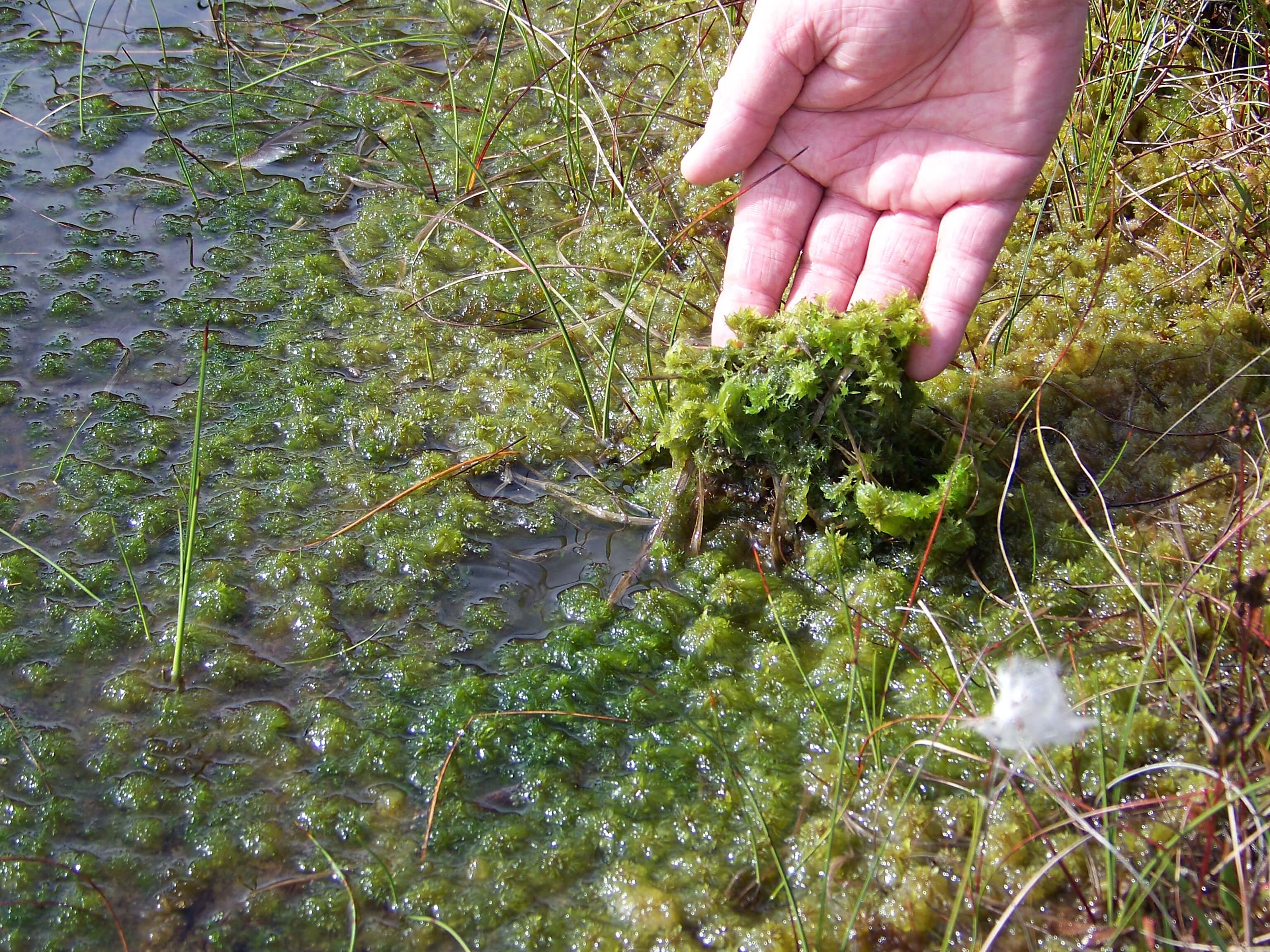
Tom and I once struggled through the bracken and muck to visit the wood. We were soaked to the knees by the time we got there ... and then the midgies came out.
See the midgie page for advice about dealing with the dreaded midgies.
Listen to Tom's story about midgies.
Unless you have a lot of time and patience, it's probably best to enjoy it from afar as you walk the Old Post Road footpath through Rackwick Glen, or from the Rackwick Road if you're driving.
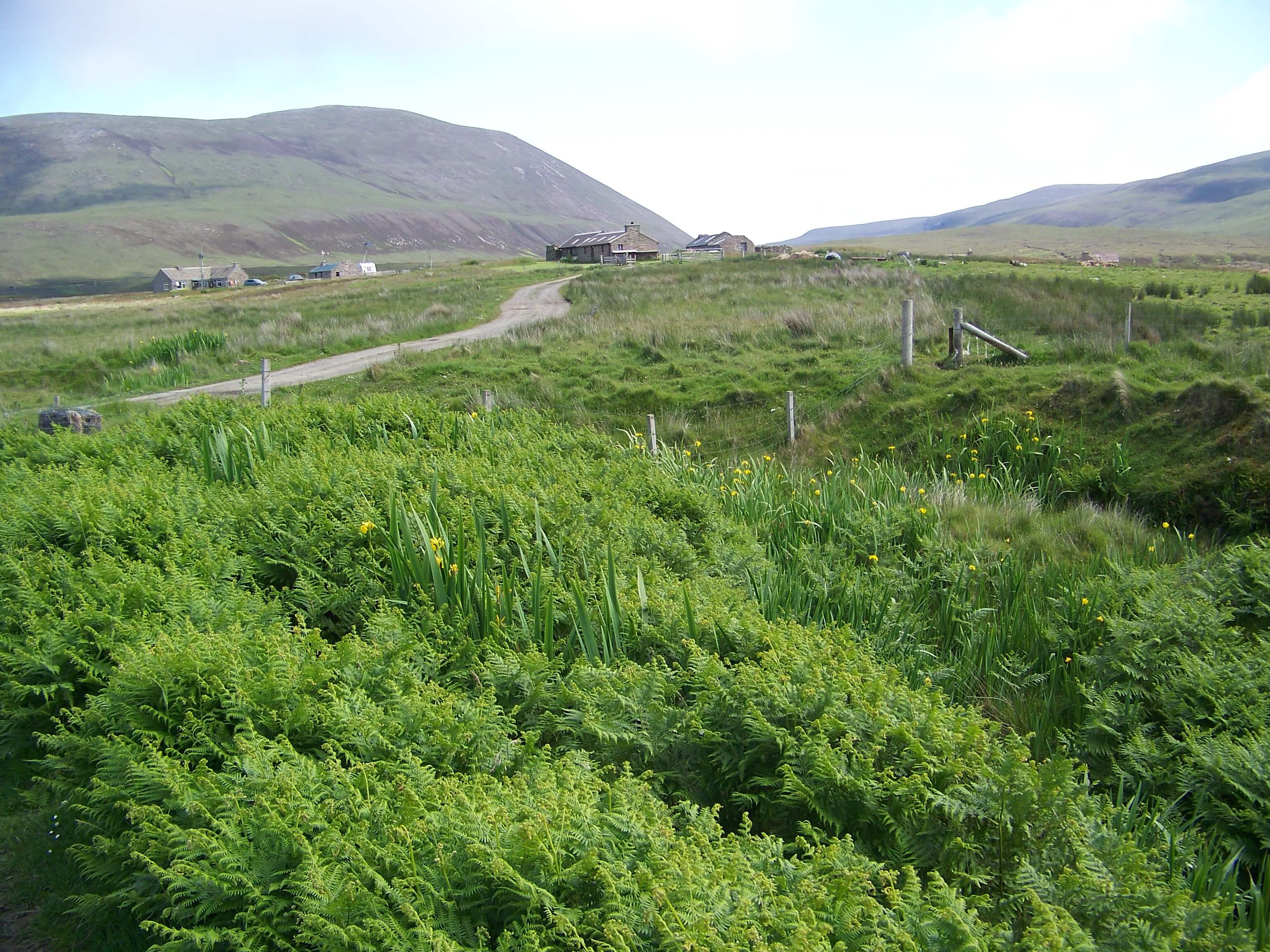
The RSBP warden for Hoy suggests watching RSPB Orkney's Facebook page for upcoming events, which may include an occasional guided walk to Berridale.
Local events are posted on the island of Hoy's website.
The Hoy Kirk
While not in Rackwick, the kirk is an interesting place to visit and a good place to shelter during bad weather. It's near the Moaness pier, where you'll disembark if you come over as a foot passenger from Stromness.
The Hoy Kirk is now a museum, and is located beside the Hoy hostel and outdoor centre. When you get off the ferry, look up the hill and you'll see it. It takes about ten minutes to walk up the hill
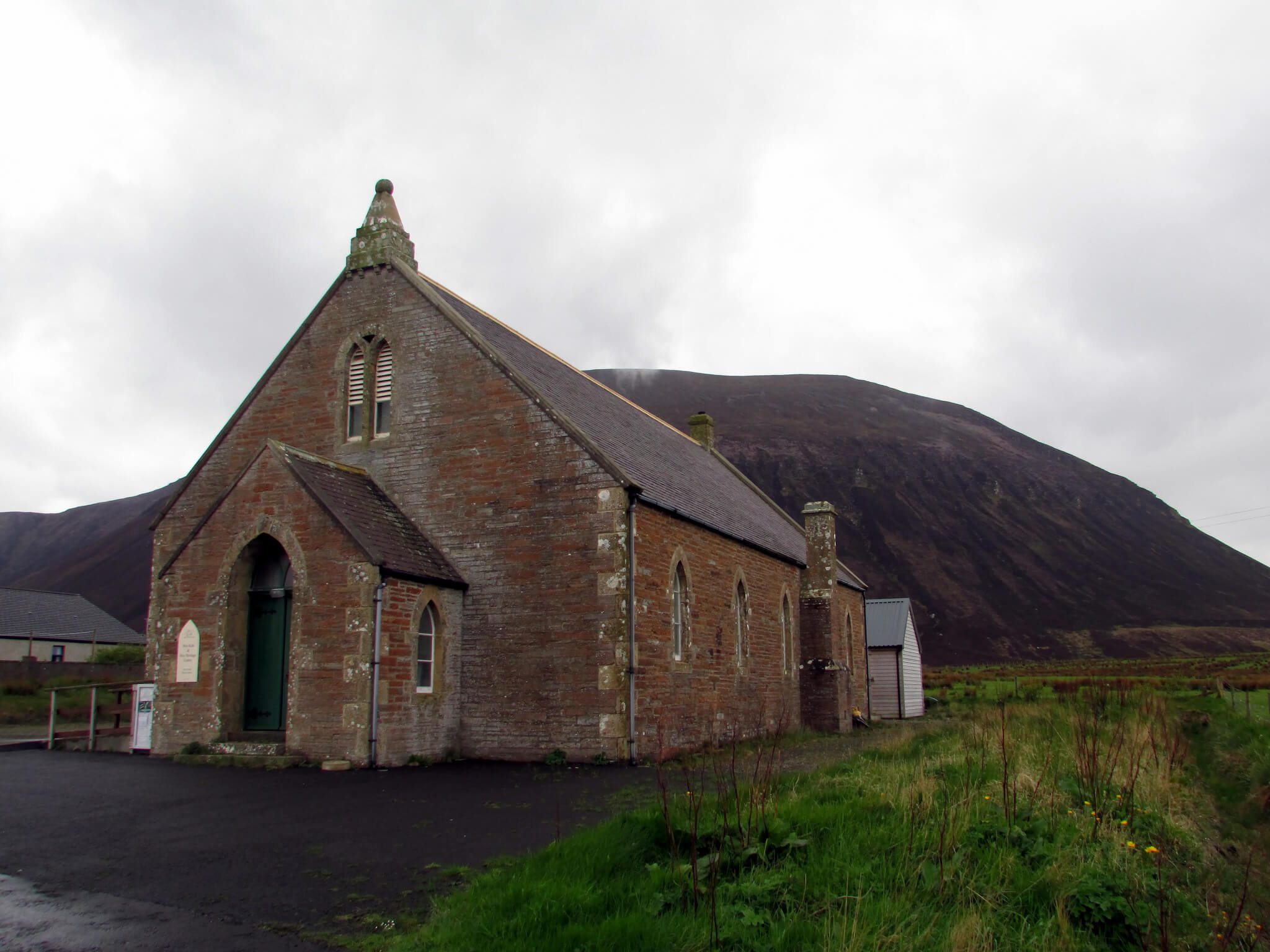
There are accessible toilets and a defibrillator inside, and the building is open all the time. During extreme weather they lock the front door due to high winds, but the back door is always open.
Hoy Heritage has collected photos, oral histories, newspaper cuttings, artefacts, maps and other interesting bits chronicling life in Hoy, including Rackwick.
Wild and not-so-wild life
Hoy is the only place in the islands with mountain hares. Along with pheasants, they were imported in the 19th century for the sporting amusement of the laird and his guests.
You'll see plenty of rabbits dashing about, and probably seals.
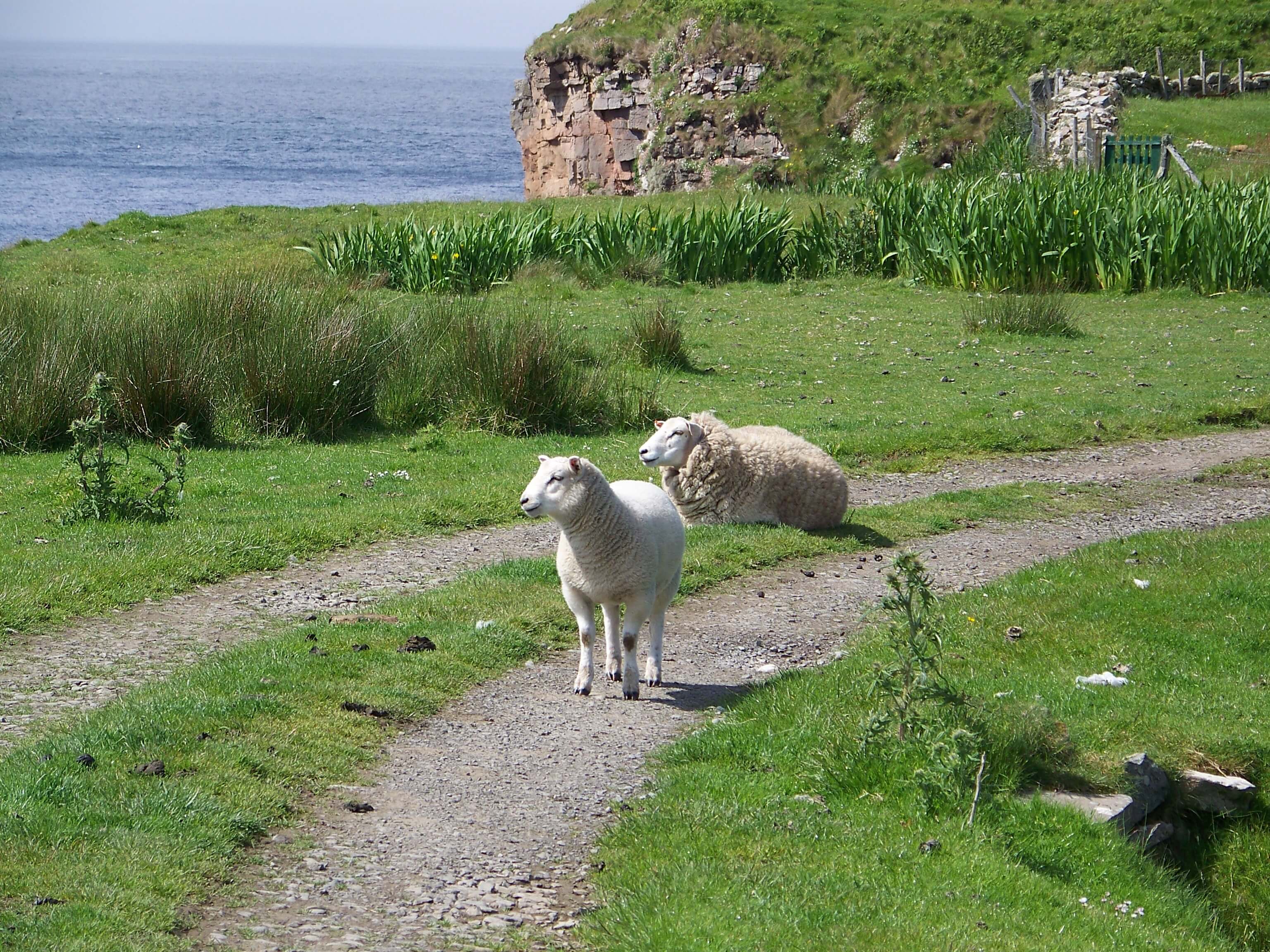
Sheep roam freely here, at least as far as the cattle grid in the road allows.
They're adorable and fun to photograph, but they are farm animals. Please keep visiting dogs on a leash, to avoid spooking them.
The dreaded midgies
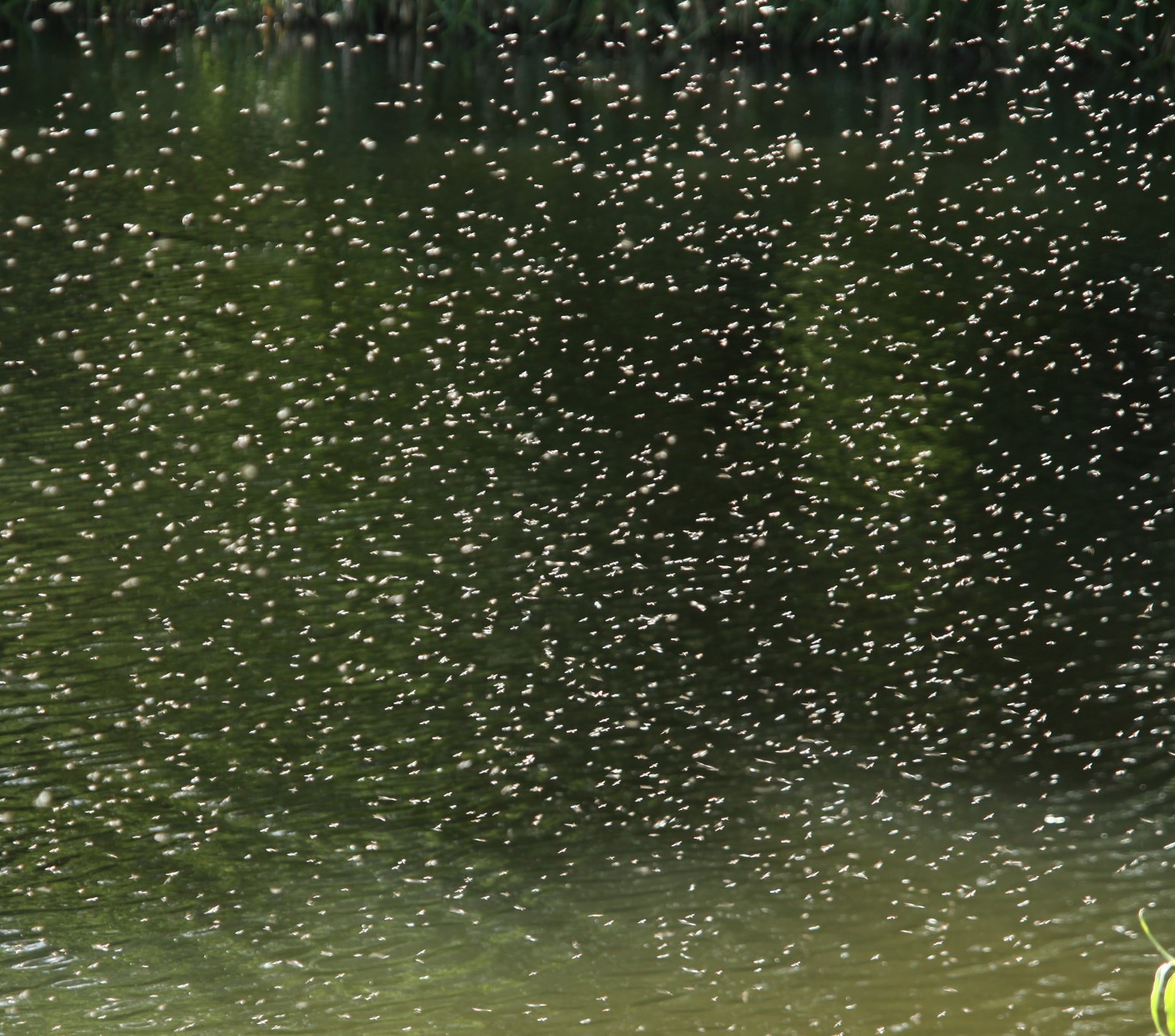
Unfortunately, with so much marshland, Rackwick is probably the midgiest place in Orkney. The upside is it's a good place to see dragon flies and damsel flies, too - neither of which try to eat your face off.
See this page for our tips to avoid midgie madness.
Interesting side note: If you see strong-tea-colored creeks anywhere in Orkney, they're not polluted. It's the peat bogs that stain the water this color. Far from being dirty, peat is antiseptic.
Bird-watcher's heaven
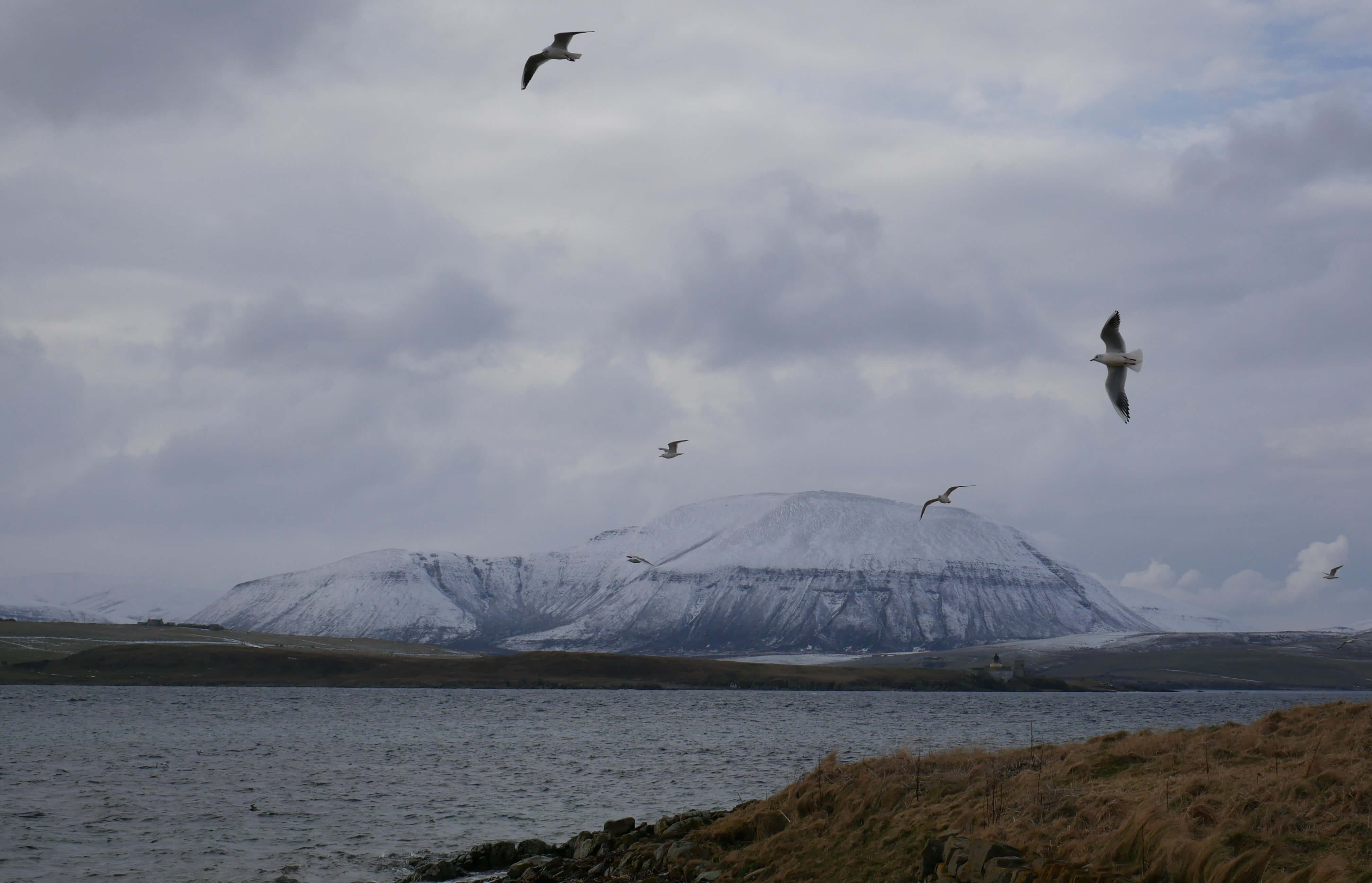
Tom and I were once delighted to get a close-up look at a corncrake as she stood on a bank by the road in Rackwick, calling to her chicks in the heather.
In warmer months, thousands of fulmars, guillemots, razorbills, and the oh-so-adorable puffins nest in cliff areas.
You also stand a good chance of seeing pheasants, hen harriers, red-throated divers, red grouse, golden plover, curlews, stonechats and great skuas, among others.
A note about bonxies
The second largest colony of great skuas in Britain is in Hoy, so your chances of seeing them are good in the spring and summer months. They're known as the pirates of the skies, due to their habit of harassing and stealing from other birds.
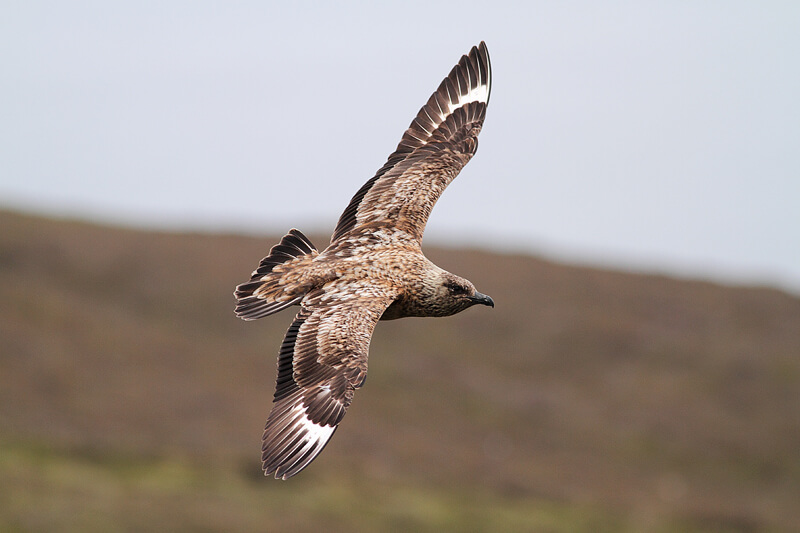
Their local name is bonxie, which may have come from an old Norse word meaning "dumpy." A friend of Tom's from the RSPB tells us there are fewer bonxies in the world than there are polar bears.
They're large birds that have the unfortunate habit of dive-bombing if you get too close to their nests on the moorland. I was told that the best way to keep them from making painful contact with your skull is to hold something up above your head.
Just in case you need to know.

How to get to Rackwick
With a vehicle:
To take your own car or camper to Hoy, you have to take the ferry from Houton to Lyness. The journey takes about half an hour.
From Lyness, it's about a 30 minute drive to Rackwick. There's parking in Rackwick, or you can park at the hostel if you're a guest there.
Camper vehicles can stay in the carpark for up to 7 days without charge.
Find Orkney Ferries timetables and pricing here.
On foot or with a bicycle:
Foot passengers and bicyclists can also take the Houton ferry. You have the additional option of taking the half hour sailing from Stromness to Moaness on the small passenger ferry, MV Graemsay.
If you have a group of 10 or more, you need to book ahead.
Bicycles ride for free.
Not much help from the community bus
There is a community bus traveling between Moaness, Lyness and Longhope. Not particularly helpful if you're going to Rackwick, but details are here.
Walk from Moaness to Rackwick
If you come over from Stromness you can walk the Old Post Road - a walking path from Moaness Pier right through the beautiful hills and into Rackwick. People from Rackwick used to make this 8-mile round trip every Sunday to attend church at the Hoy Kirk.
You can hire a guide
If you just want to relax and let somebody take you around, you can hire a tour guide. Make arrangements ahead of time, especially in summer. One island resident who gives tours is Steven Rhodes. Call him at 01856 701632 or 07887995730
For a taxi or minibus pickup, you can contact Albert Clark at 01856 791315. He'll give the occasional tour, as well, but his availability is now limited.
Some Mainland tour guides will take visitors to Hoy.
Inexpensive places to stay
Other than camping for free at the bothy, here are a couple of other inexpensive places you can stay.
The Orkney Islands Council-owned Rackwick Hostel is open from April through September. With just 8 beds space is limited, so book early.
The Council also runs the Hoy Centre, a hostel with 32 beds about a mile from where the ferry drops you off in Moaness, coming from Stromness. It's open all year, except throughout Christmas and New Year.
Last, but not least ... where are the toilets?
There are public toilets at the ferry terminals. Toilets in Rackwick are near the car park, open 24 hours.
Accessible toilets are available 24 hours inside the Hoy Kirk museum.
(To find more public toilets in the Orkney islands click here.)
We hope you enjoy your peedie adventure in Rackwick!

Find more peedie adventures ...

Mermaid image (Rhonda's pages) and storyteller image (Tom's pages), and all other illustrations except where noted are here by the courtesy of our dear friend - Stromness author, artist and historian, Bryce Wilson MBE, who owns all copyrights. Thanks, Bryce!

